Capital:
Accra
Currency
Cedi
Best time to visit:
from october to march
In a word:
Hani wodzo (let's dance!)
Vaccines
Mandatory vaccination: yellow fever; anti-malarial prophylaxis is recommended.
Essential experiences:
Spend the night on a tree 30 meters high after covering the seven suspension bridges of the Kakum National Park; Live a day with the Carmelite Sisters of Tamalè and sleep on the church benches; Get lost in the chaotic Kejeta Market of Kumasi where you sell everything while you go to the king Ashanti.
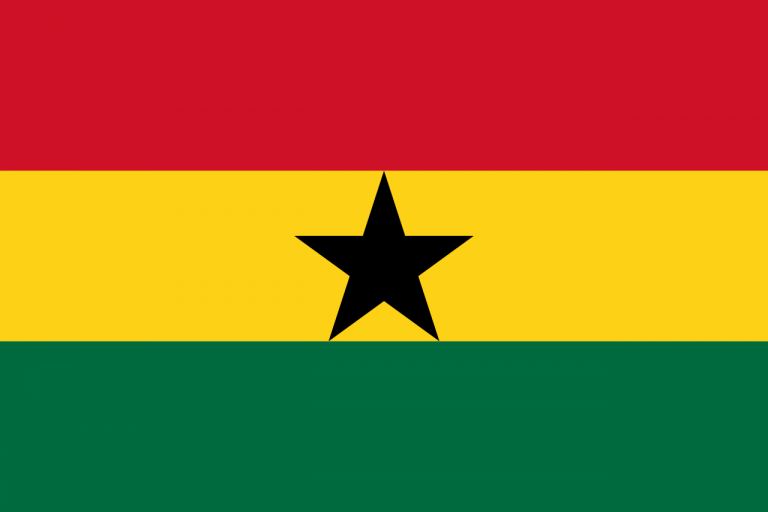
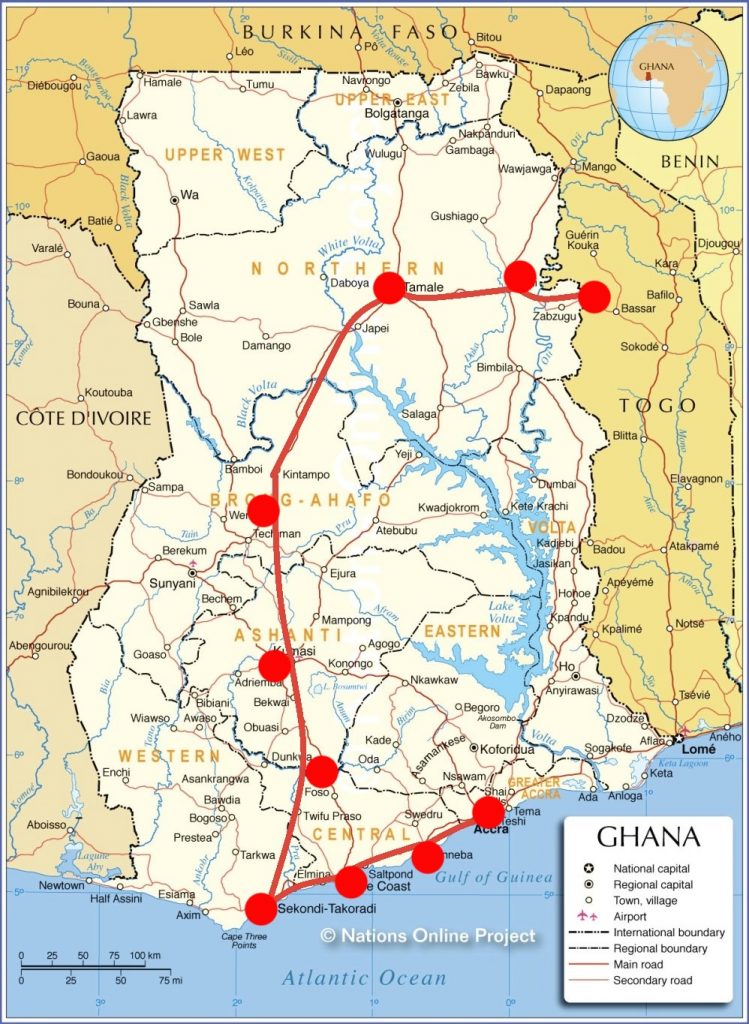
In this unforgettable adventure we rented a van with driver in Accra and traveled all over Ghana from south to north to Benin through the small Togo.
Visiting these countries it is possible to get an almost complete picture of these lands so far from us: the nature of tropical forests, the wonderful beaches still guarded by colonial fortresses, the ceremonies of homage to the king of the Ashanti, the tribal villages with their architecture and impressive decorations, a lived experience trying to establish a more direct relationship with the inhabitants.
Flying with the Royal Air Maroc we had the chance to take on two baggage of 20 kg each; the right occasion to bring with us aid for the various orphanages that we will visit along our journey: medicines, games, educational material, clothes up to a water pump of a van requested by a missionary in Benin. It will not be an easy journey, we will find ourselves sleeping in the most disparate places, from the benches of a church of Carmelite nuns to the huts on stilts; we will be stopped dozens of times from makeshift checkpoints by corrupt police officers looking for bribes but we will be able to say, at the end of this experience in West Africa, to have received more than we have offered. The smiles of the children of the orphanages, their innocent questions, their looks will fill our hearts forever.
Get on board with us: here we go!
Our suggested itinerary (10 days) | |
three days: | Accra, Cape Coast, Elmina |
two days: | Kakum NP |
three days: | Kumasi, Tamalè |
one day: | Sang (orphanage visit) |
| one day: | transfer to Togo by land or to Accra and flight to major African cities |
We land in Accra at 5 am after a stop in Casablanca, Morocco and one in Lome, in Togo.
We are immediately greeted with an oppressive heat while we load the many bags on our van. This will be a very special journey for us, a journey of solidarity towards the orphanages and the villages we will meet along our way, letting ourselves be guided by the flow of events ...
Jamestown. Our eyes are filled with images of children who play and dance on the long beach ... women sell all sorts of merchandise and carry them on their heads. Colored, embroidered dresses sway in front of us wrapping the large round seats of the "mamy"; in a small clearing we see thousands of small fish lying on the ground to dry and then be sold in stalls along roadsides; colored pirogues dangle in the ocean, gently rocked by the waves, painting a perfect picture.
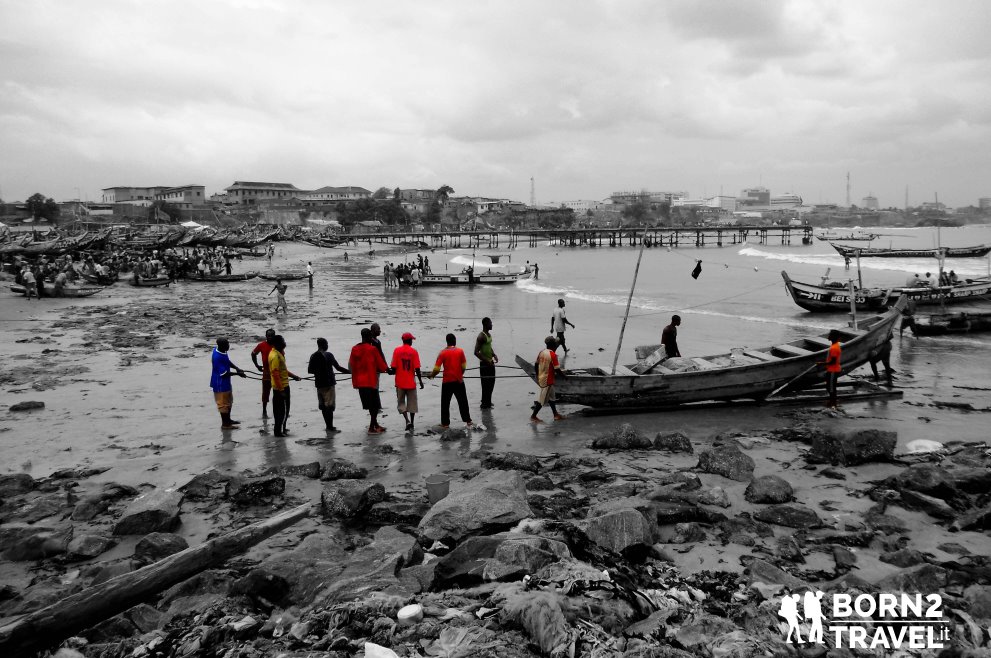
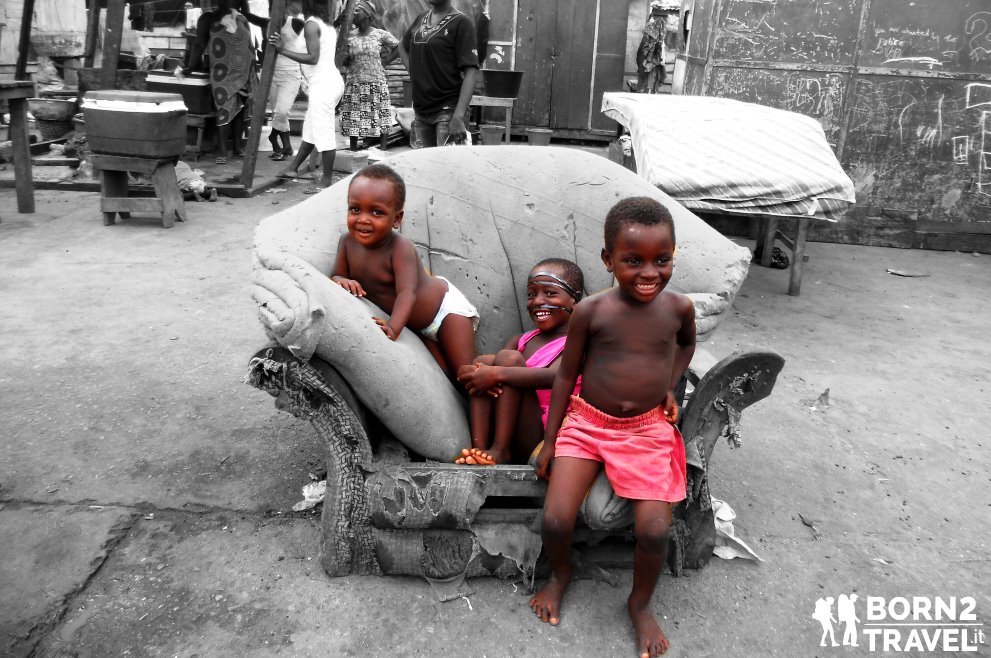

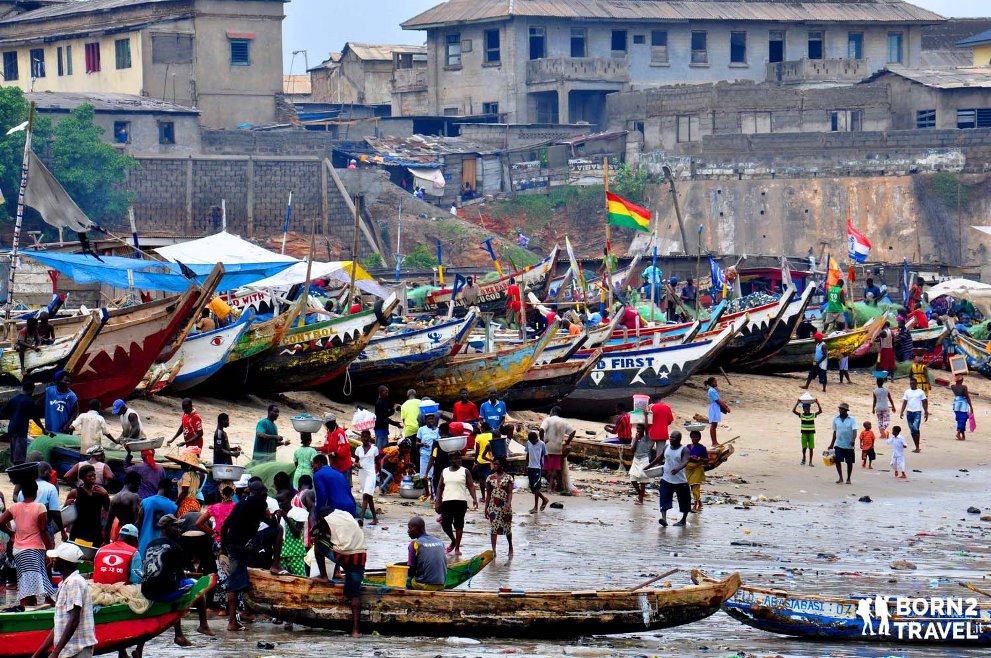
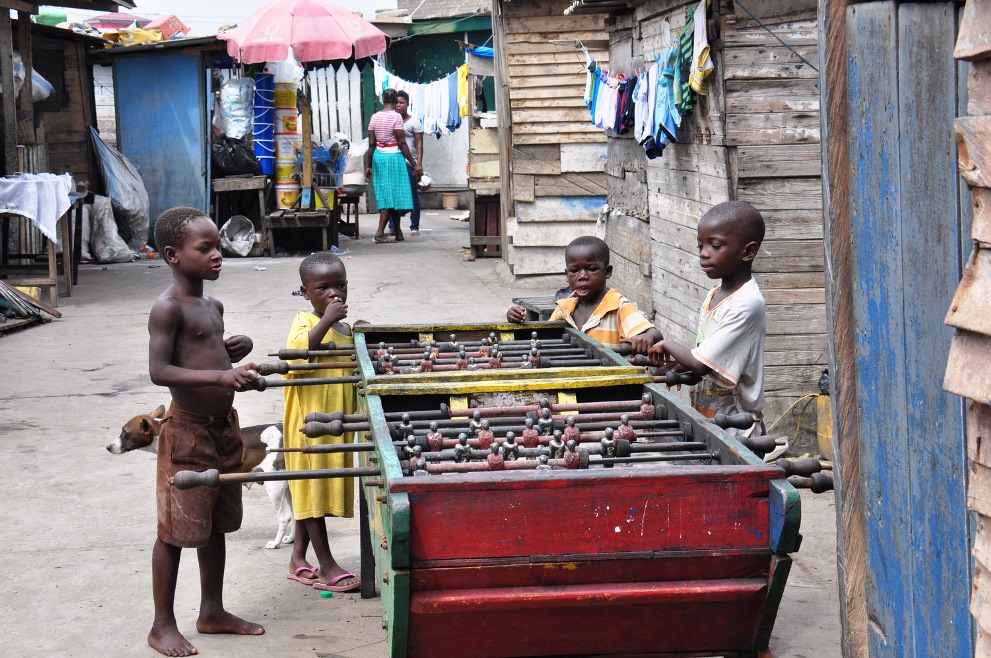
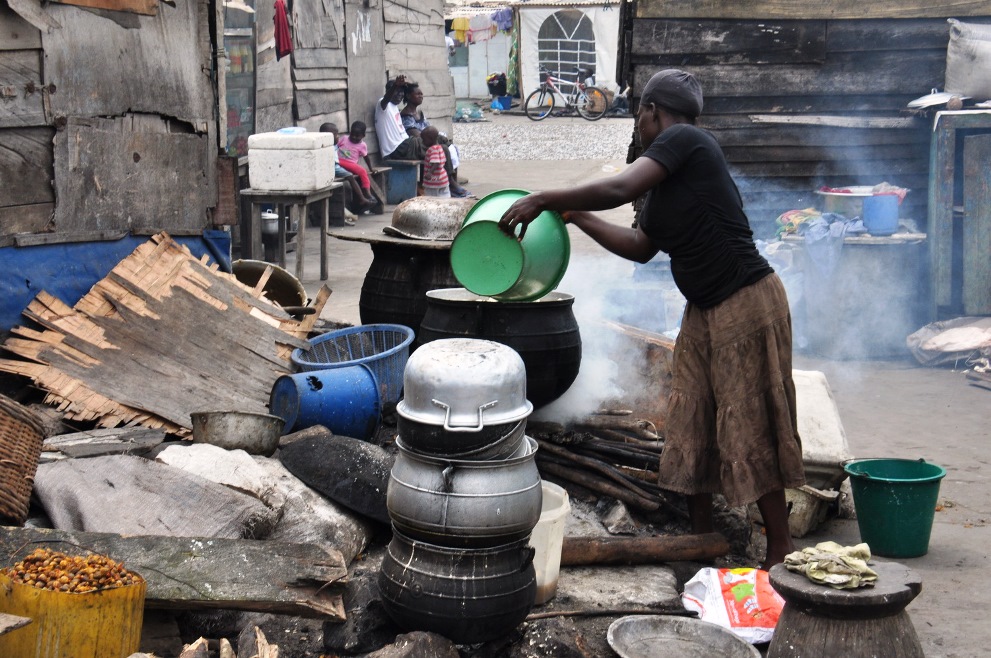
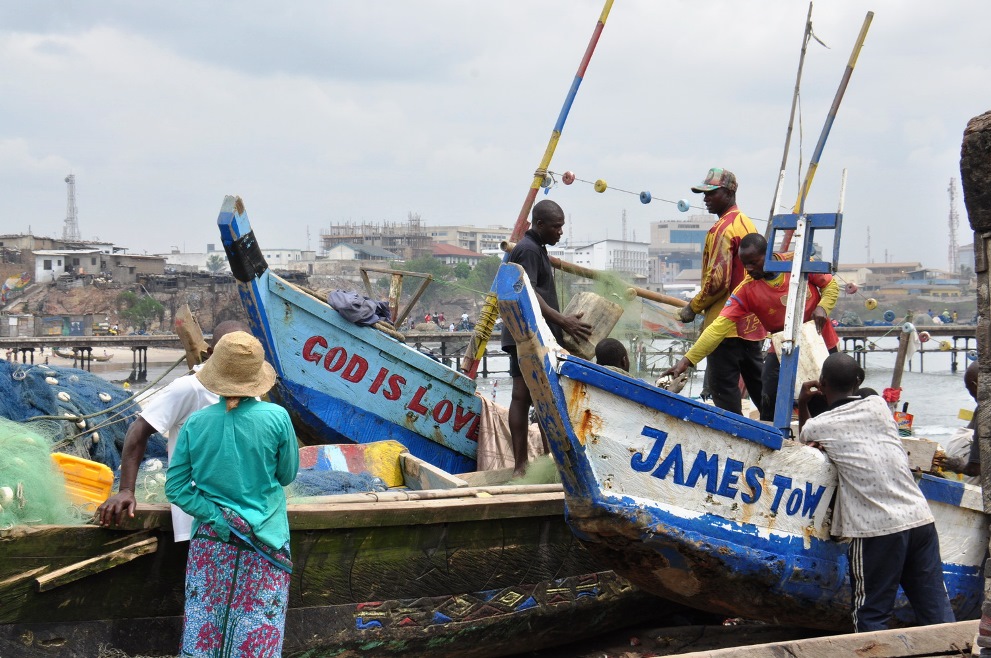
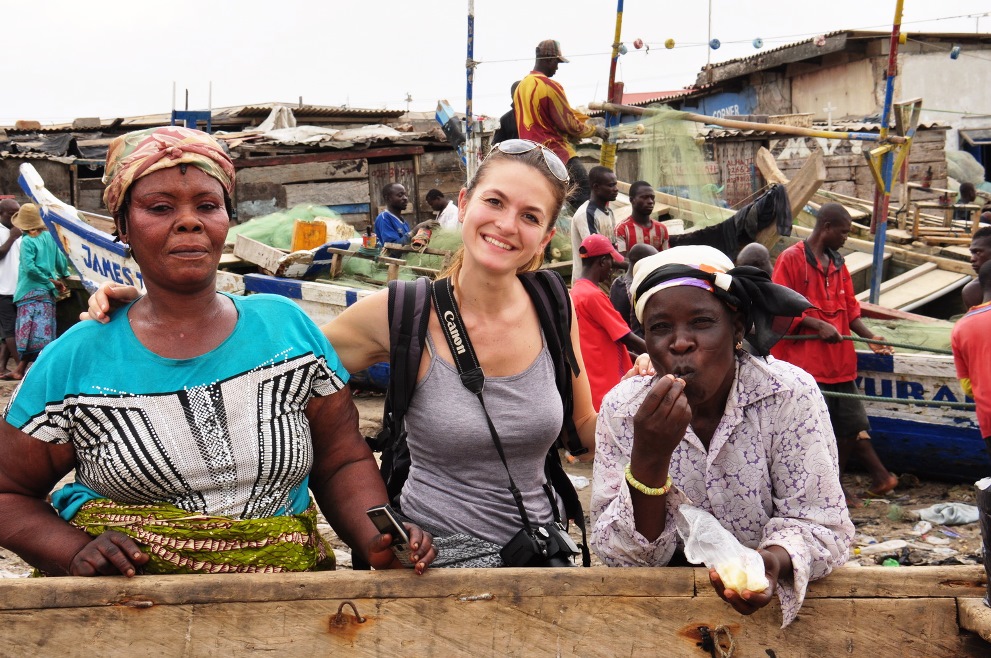
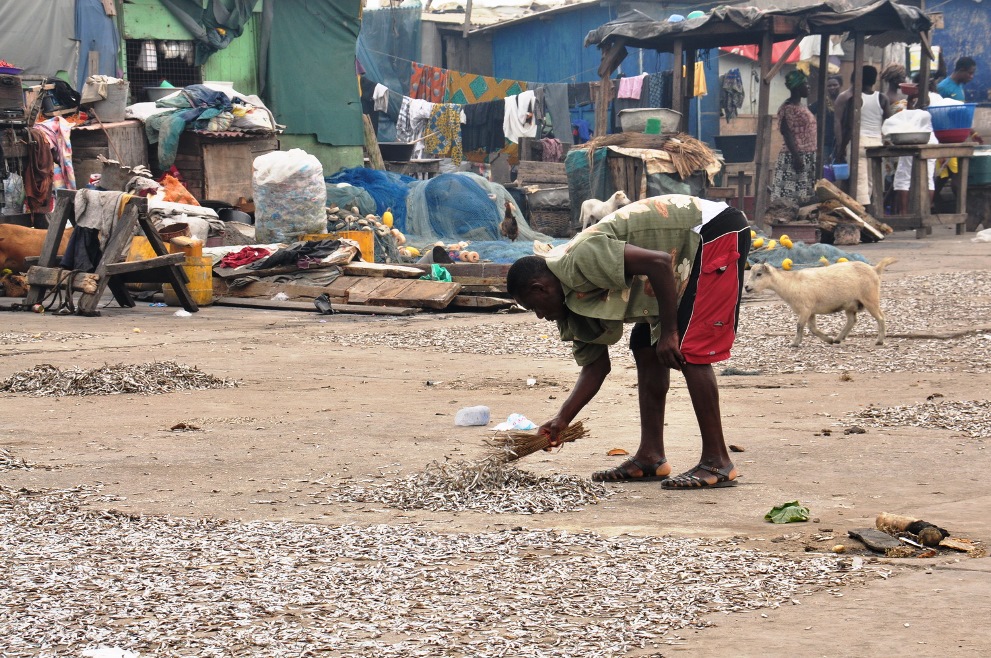
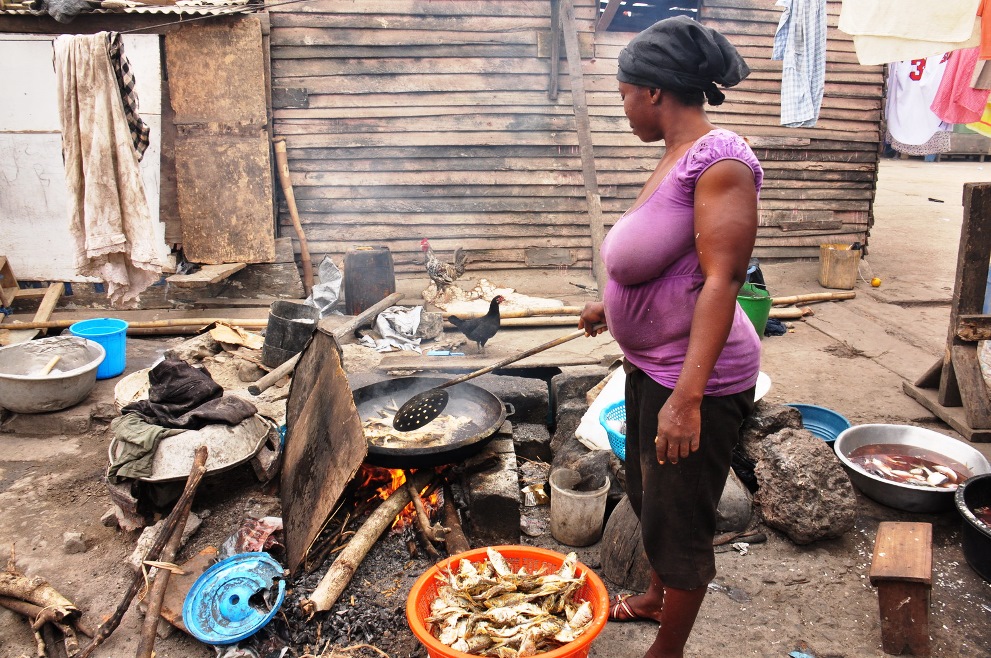
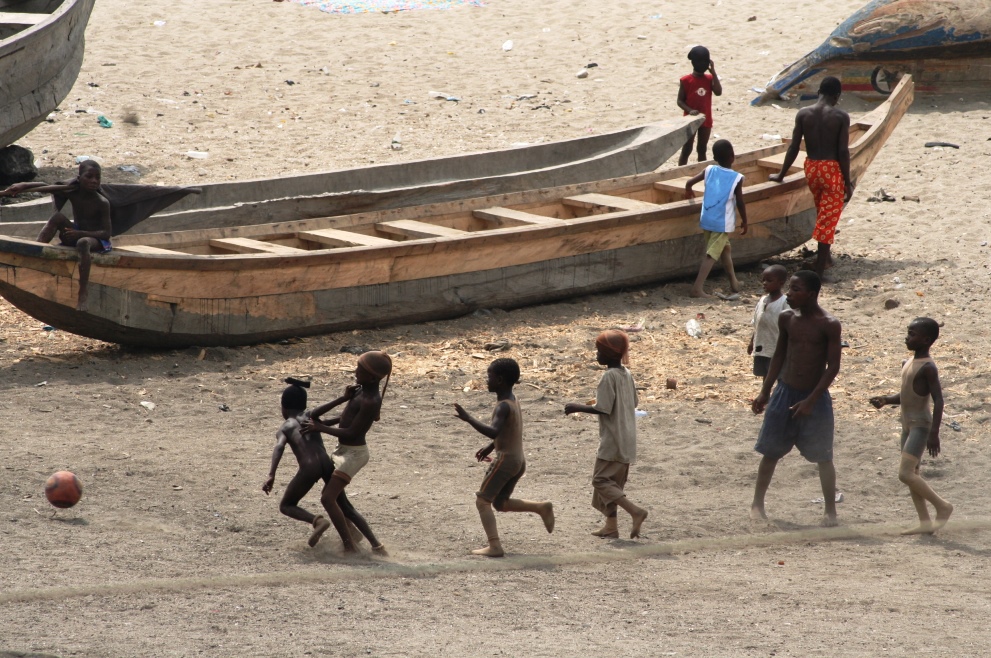
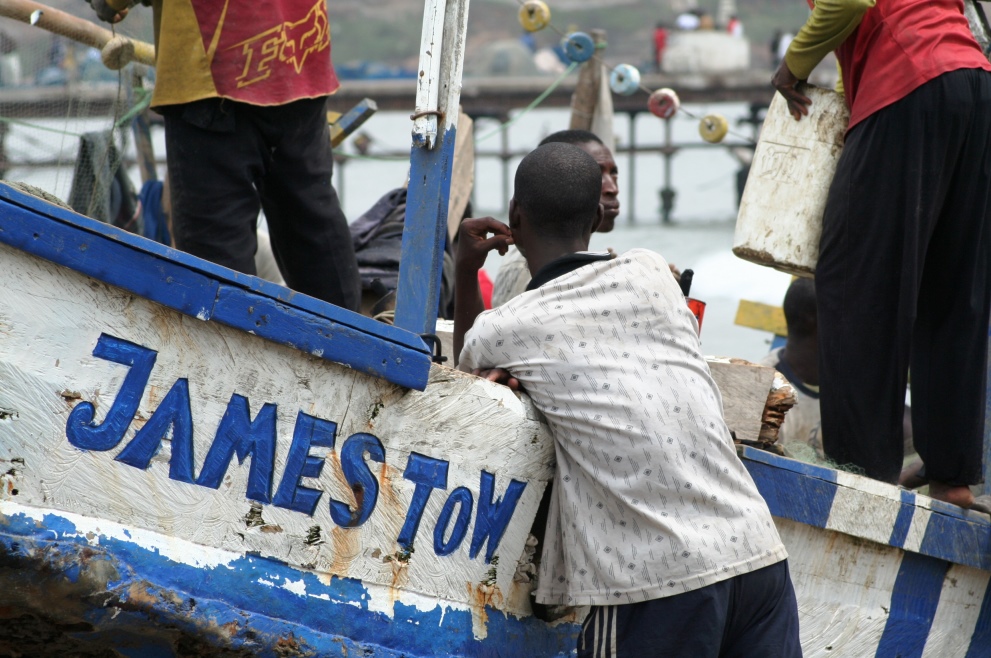
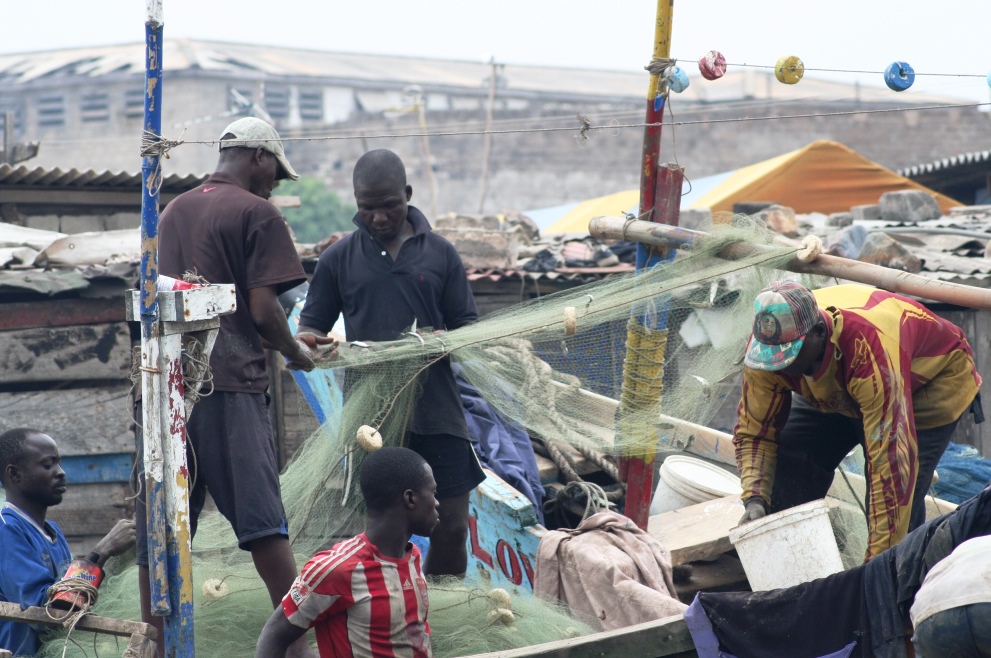
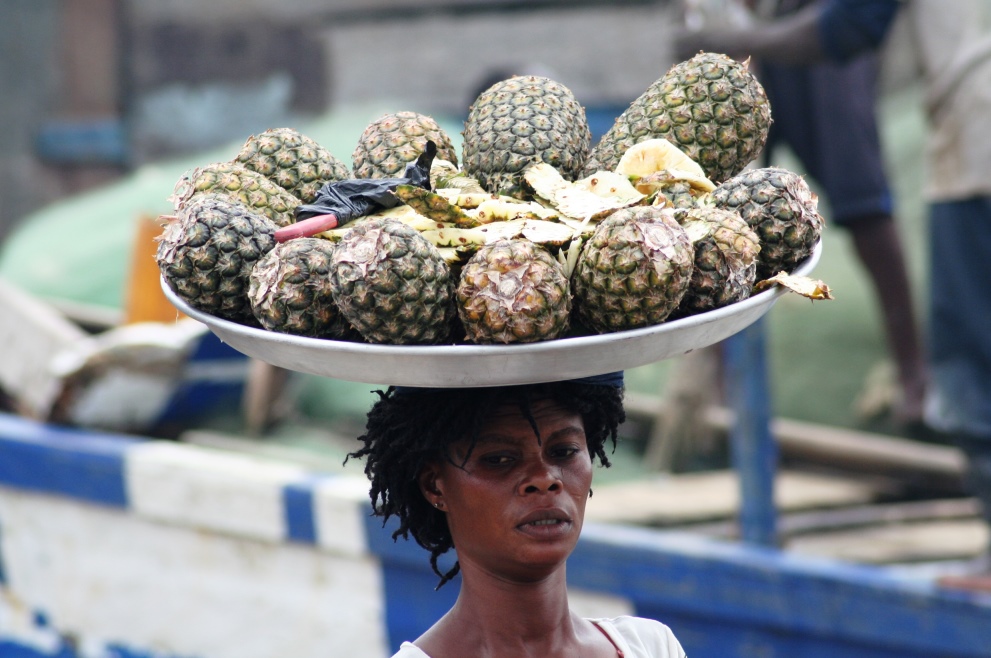
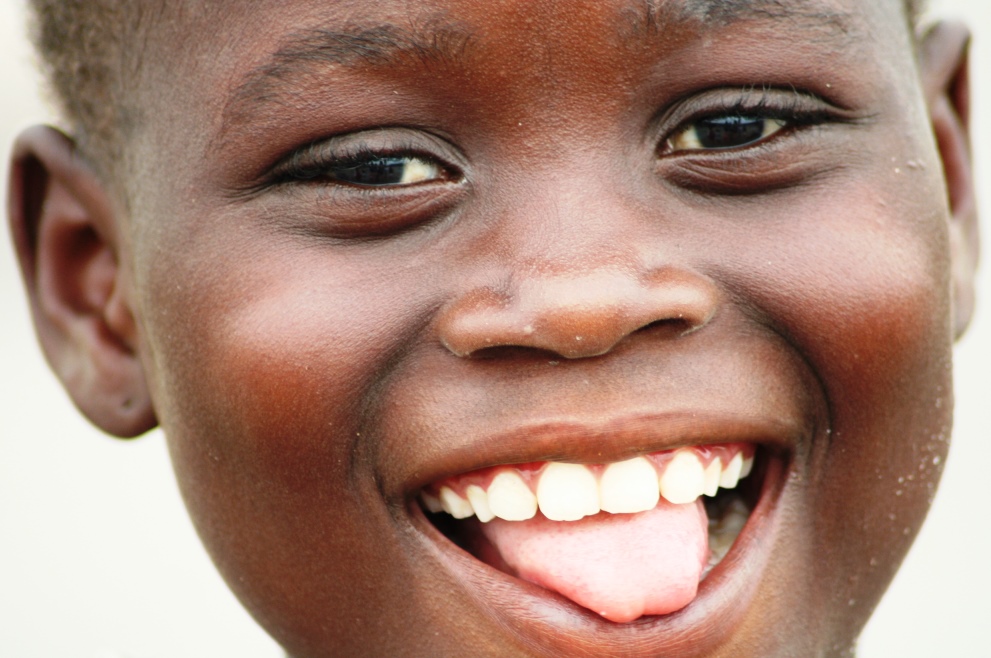
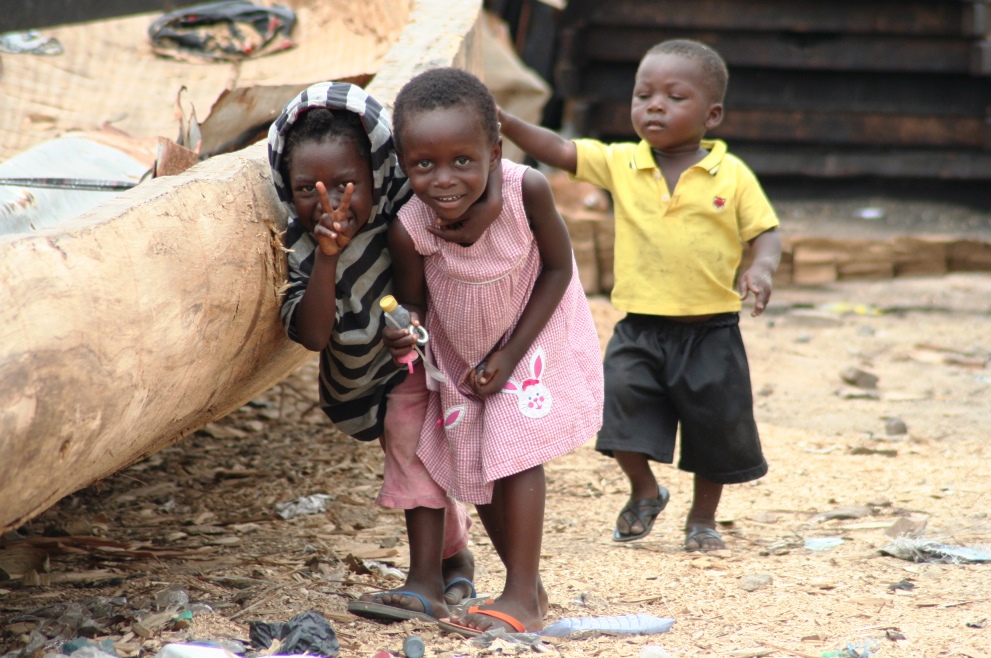
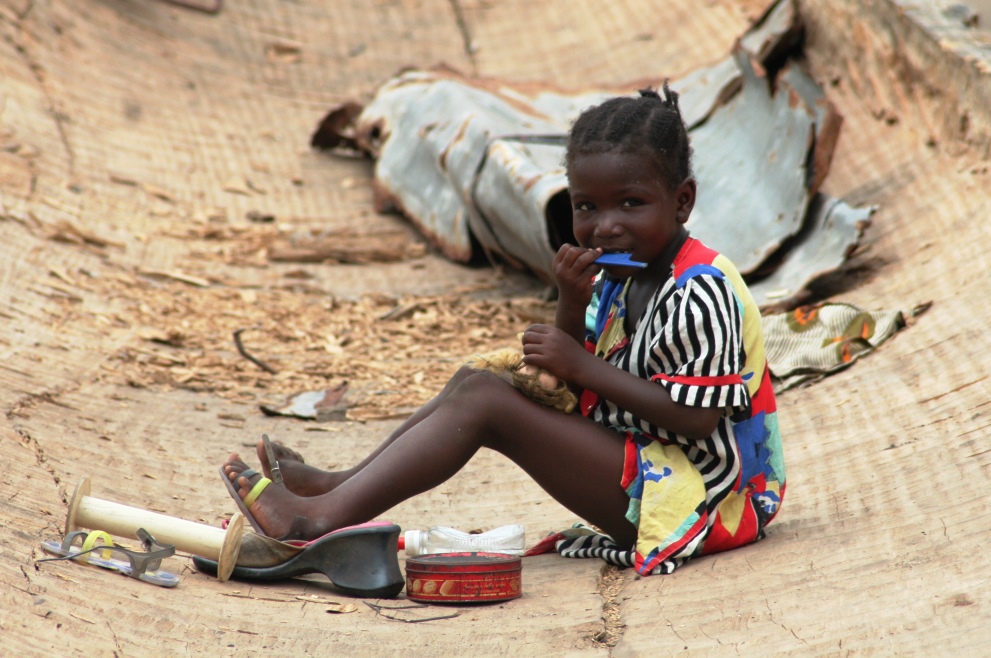

Bizarre visit to a laboratory of many different shapes. According to their belief: we must also enjoy the last journey of life! This is a custom in vogue for several decades here and makes it clear that death is not seen in a sad and dark way but is lived with a completely different state of mind.
Today on the Ghanaian coast there are 30 forts, castles and former trading posts, many of which bear witness to the greatest forced migration in history, the slave trade and the atrocities that humanity is able to commit. Castles like Elmina, Cape Coast, Ussher Fort, Christianborg Castle have been turned into real museums and offer guided tours by local staff. The experience is one of those that leave their mark also because the tours literally guide visitors through a journey that vividly evokes the harrowing experiences of slaves massed in the dungeons of castles before their departure and their passage through the "doors of no return".
Senya Bereku. The fort of Good Hope built by the Dutch in 1705, initially as a warehouse for the gold trade and only ten years later as a place to welcome slaves awaiting embarkation for the Americas ...
Cape Coast. Another colonial fort used by the Dutch, Swedes, and English ... we visited the terrible cells where the slaves were kept, small cells that contained up to 200 people until deportation.
Early in the morning, when the sun still does not warm this land too much, we get lost among Elmina's fish sellers.
Elmina, a city like many others on the African Atlantic Ocean that in the past have witnessed a brutal cruelty ...
If you think of Auschwitz, or Phnom Penh, or Kigali you suddenly realize that sometimes the story is not "magistra vitae" and the man finds himself punctually repeating the same mistakes irreparably.
He finds himself humiliating his fellow man, massacring it or destroying it inwardly in the name of a stupid ideal, a religious belief or a desire for supremacy. In those cells damned simple men were robbed of their soul and death began to represent the only escape route, also because, if you didn't die of starvation and deprivation, you were forced to cross the "door of no return". No name was more suitable for this small door half a meter high because even with those last steps in their Africa the slaves had to be humiliated.
Once through that door they were embarked for the New World, a new world but of old atrocities. The era of slavery began.
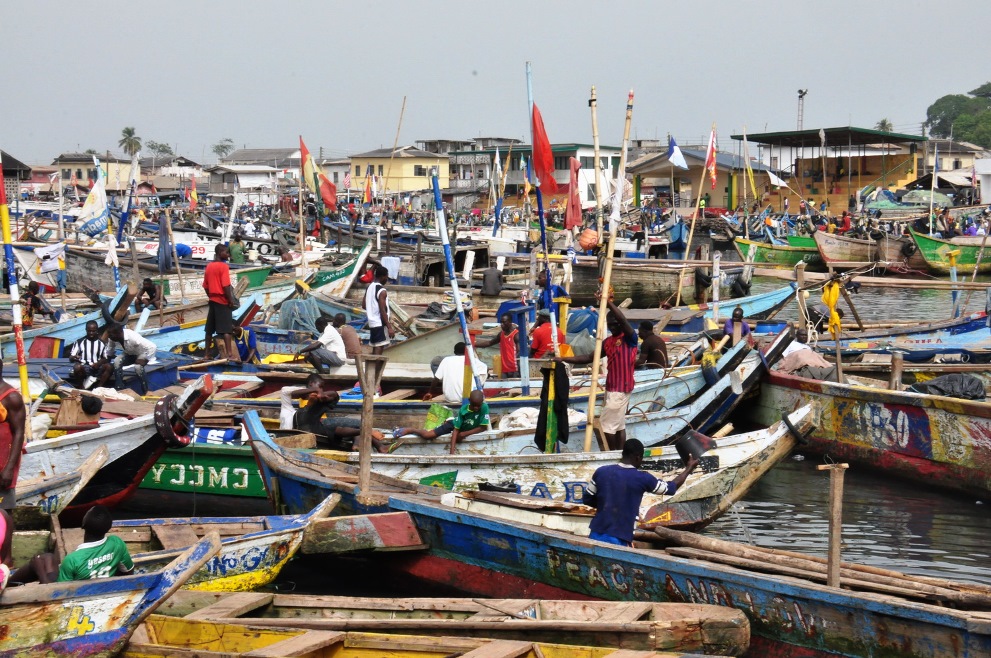
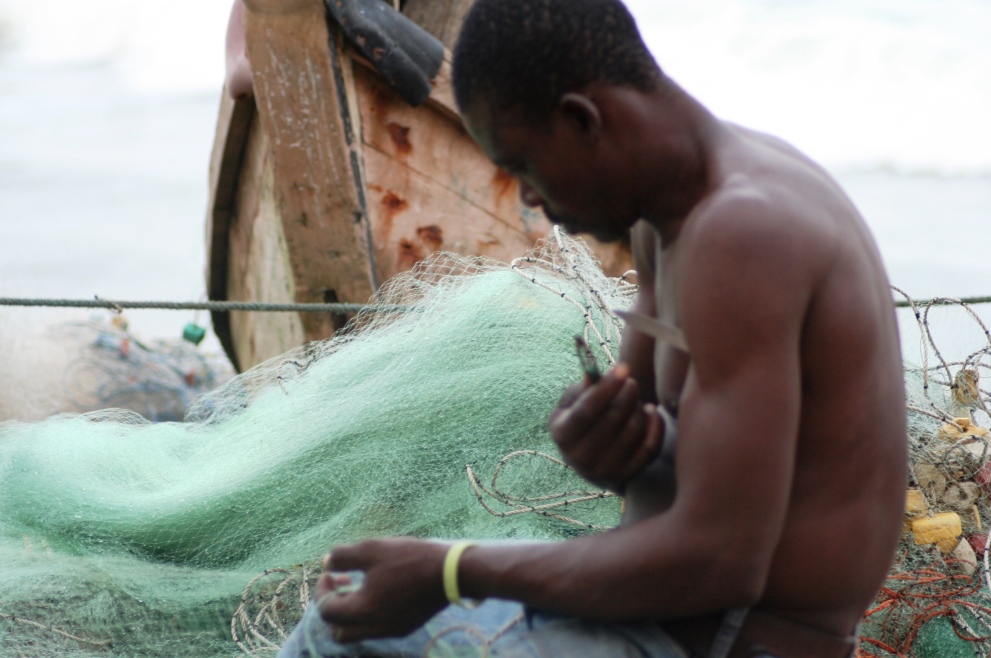
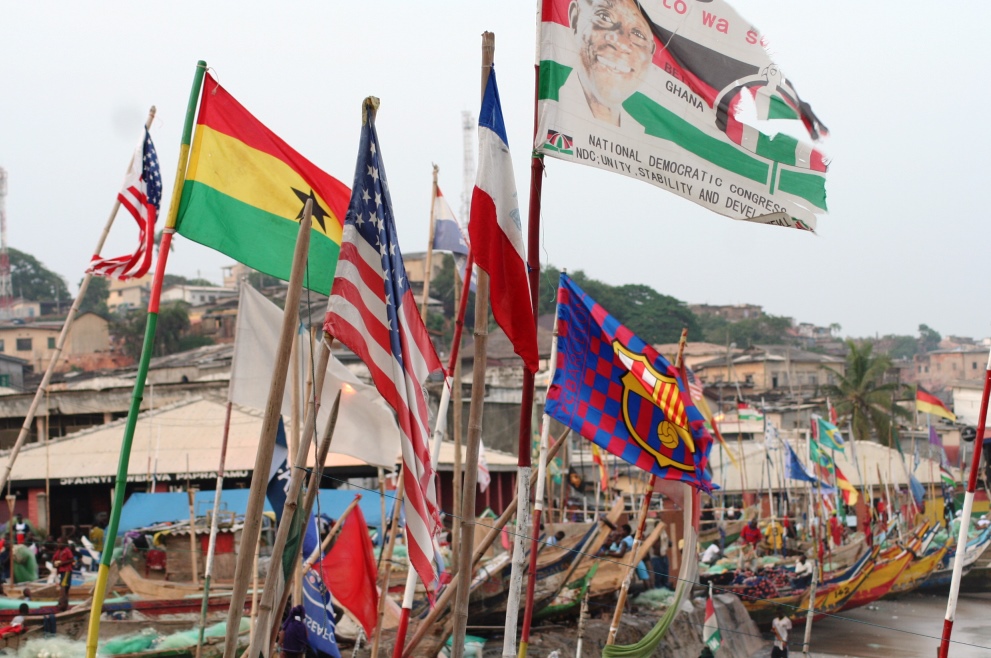
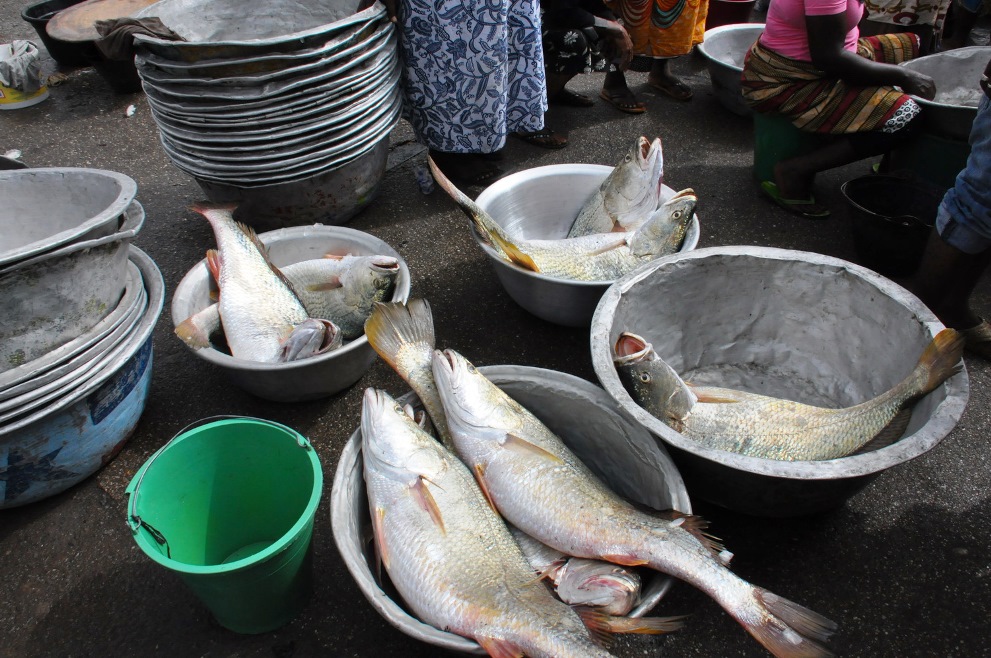
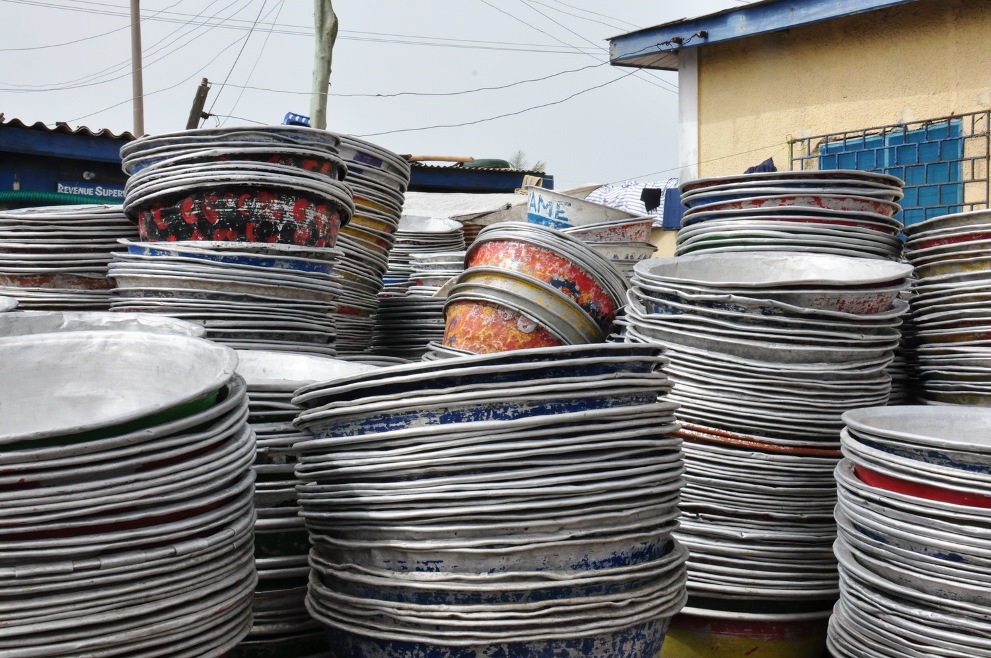
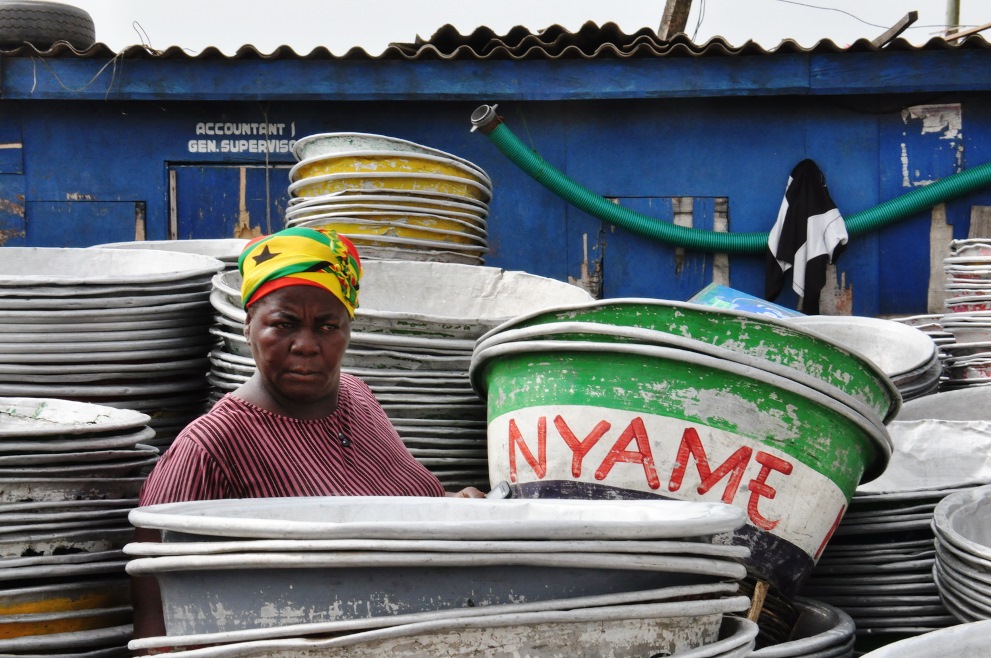
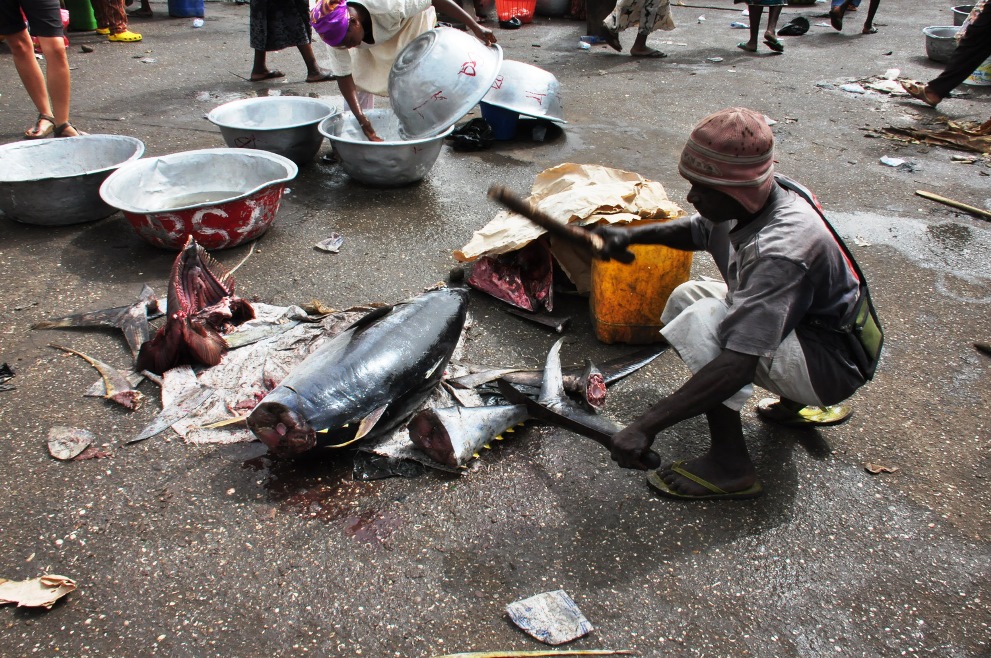
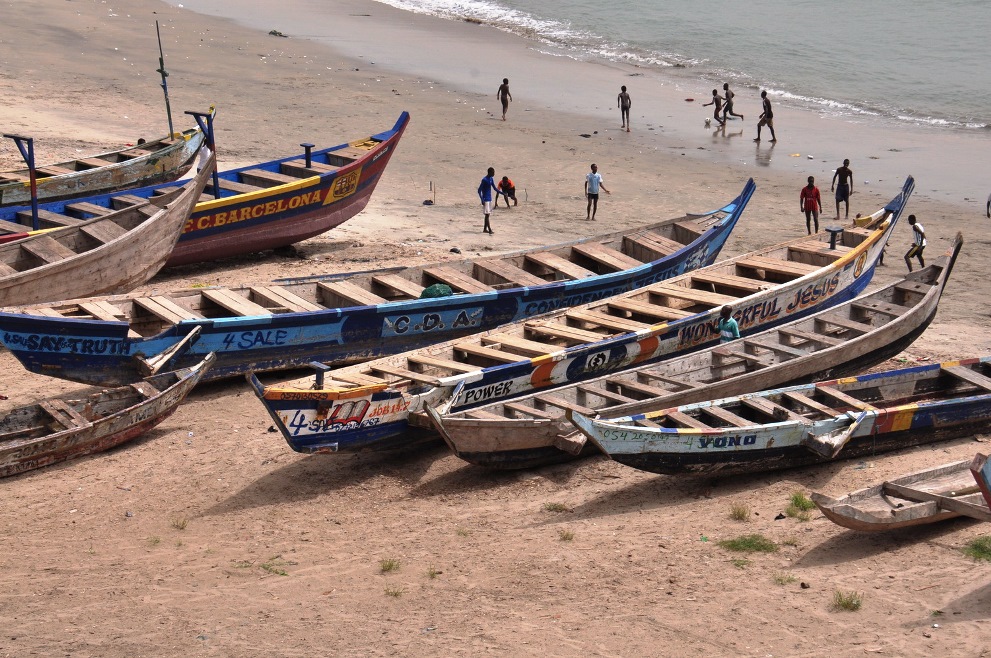


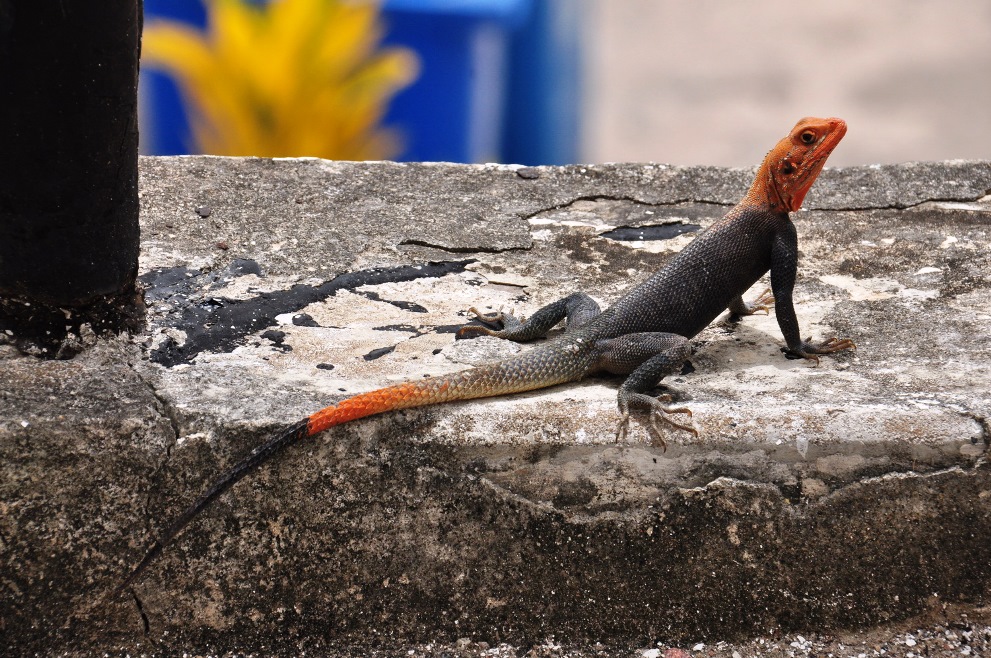
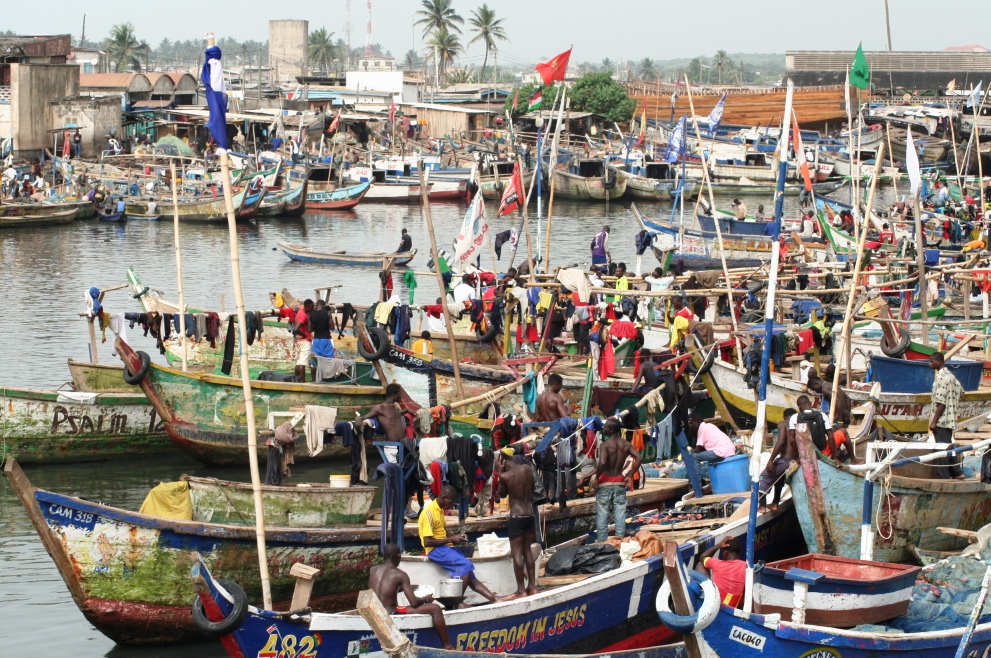
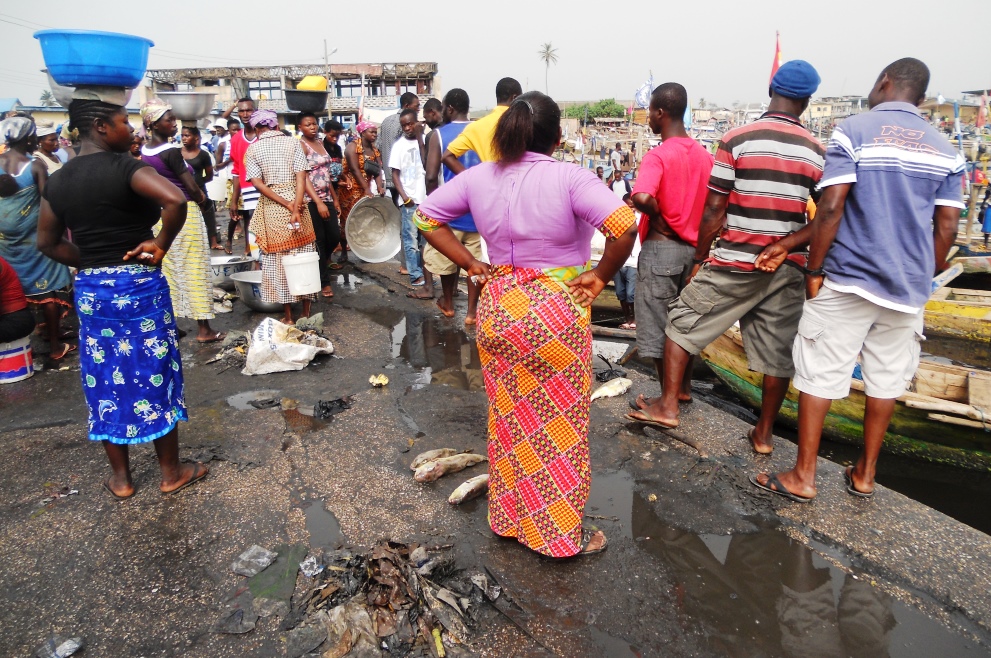
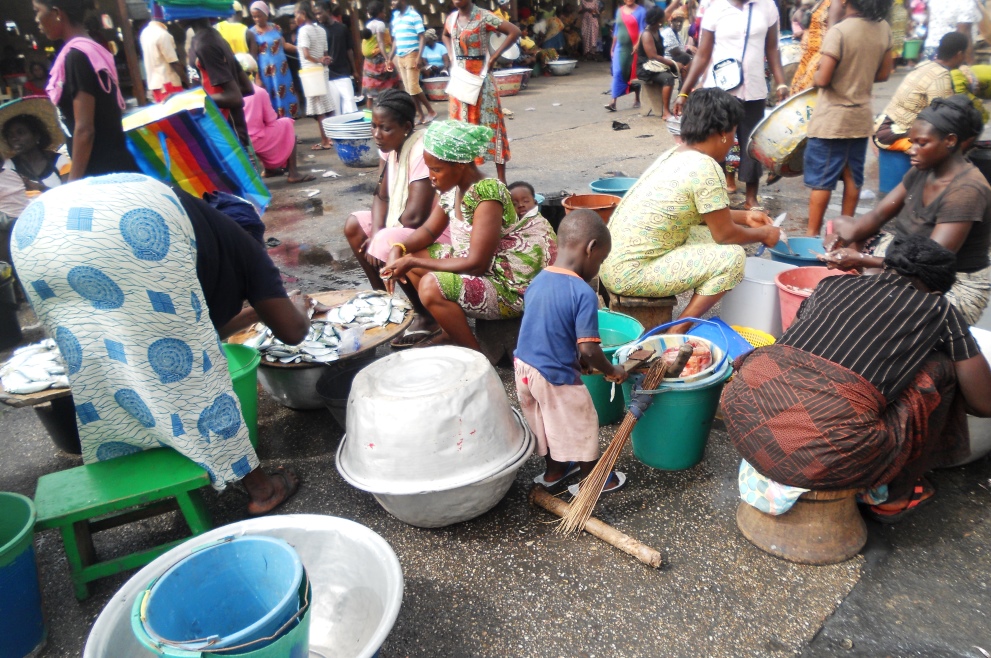
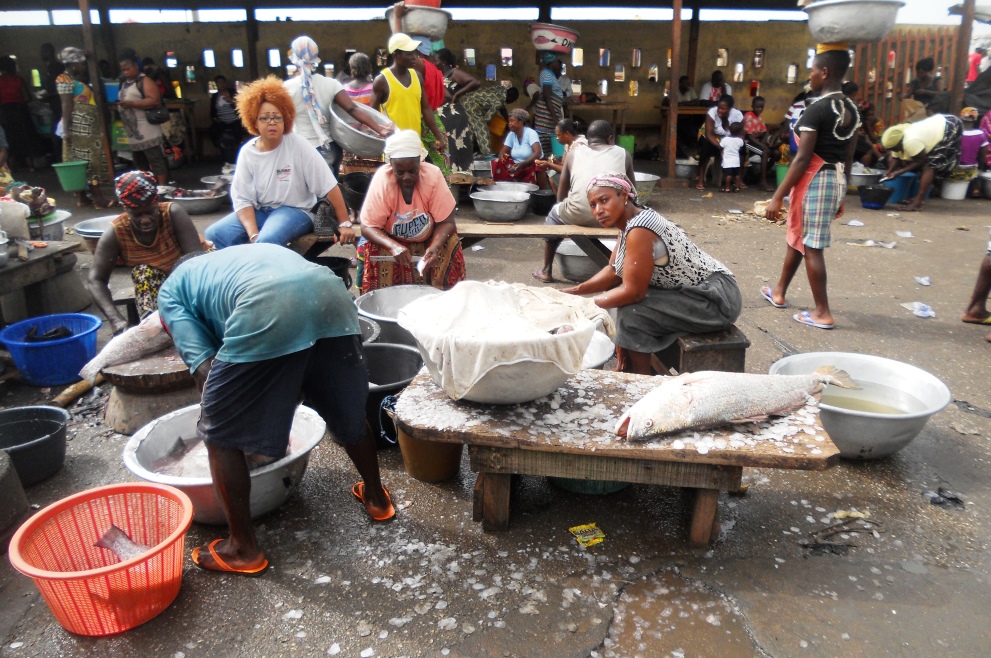
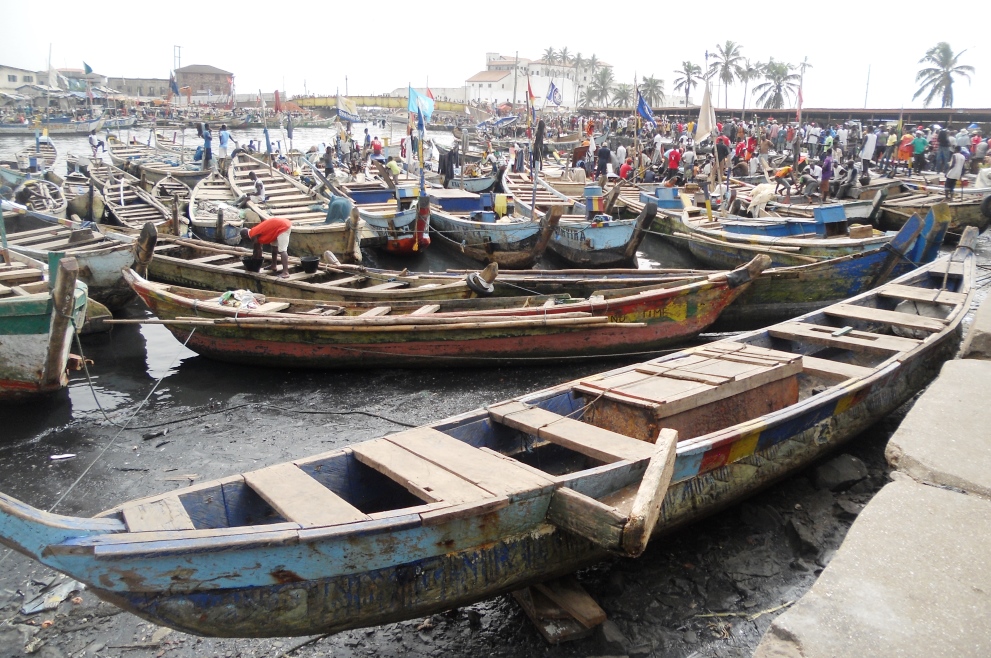
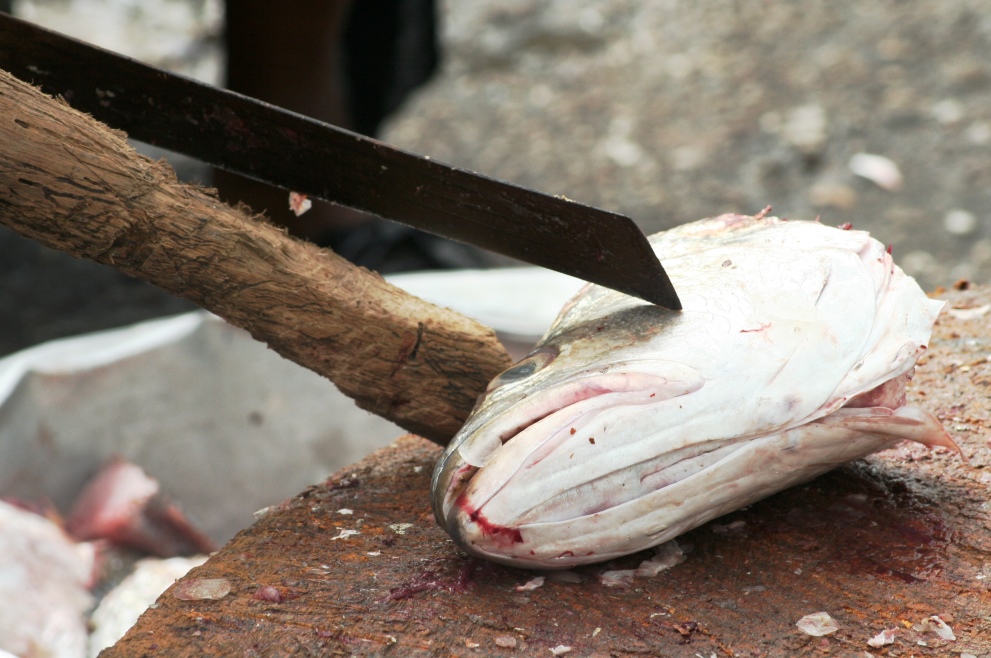
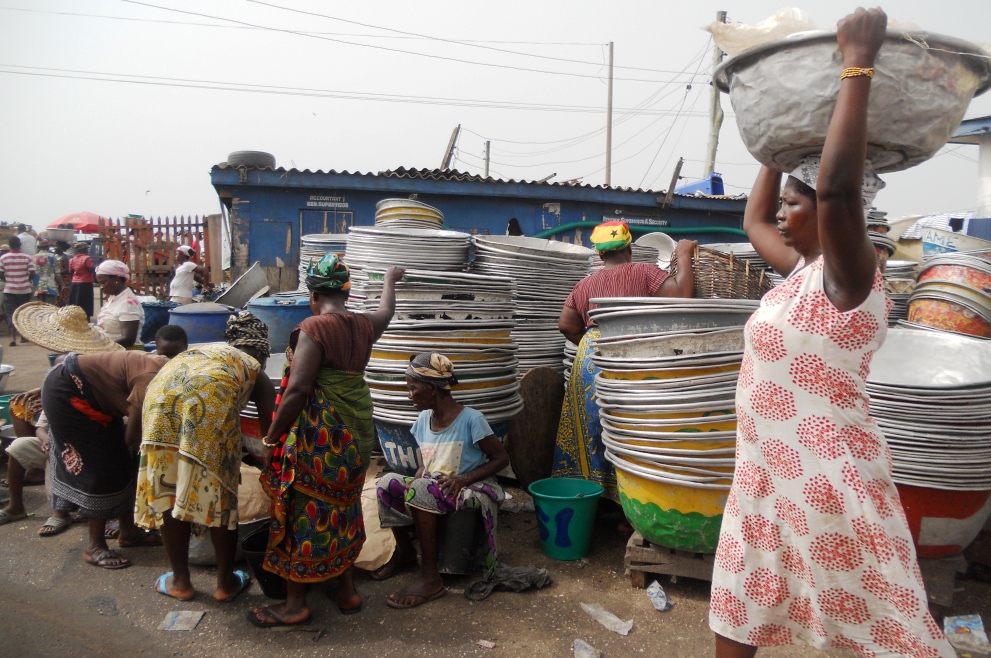
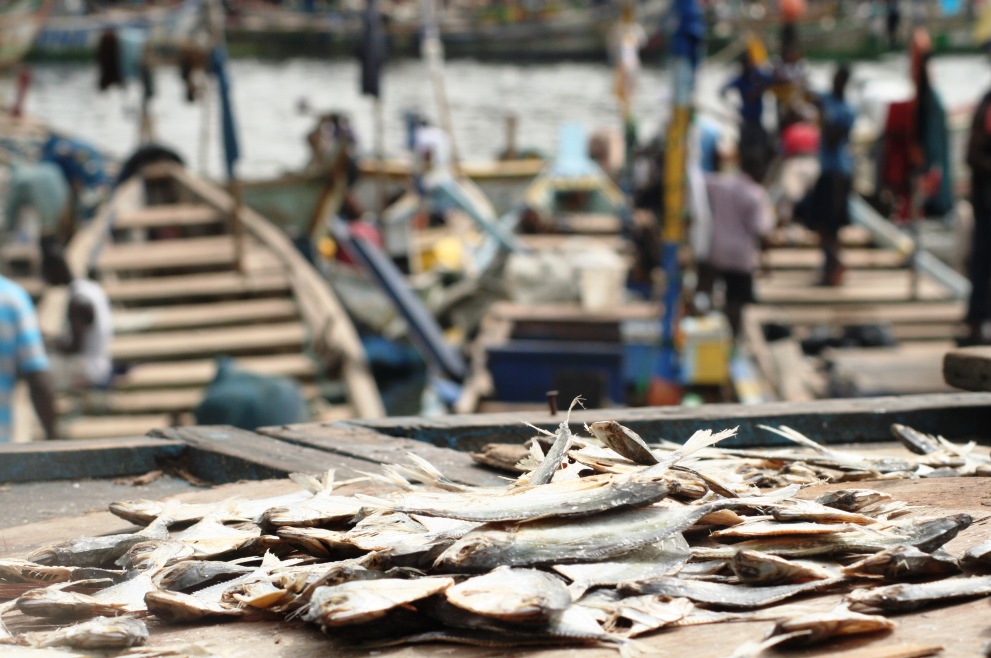
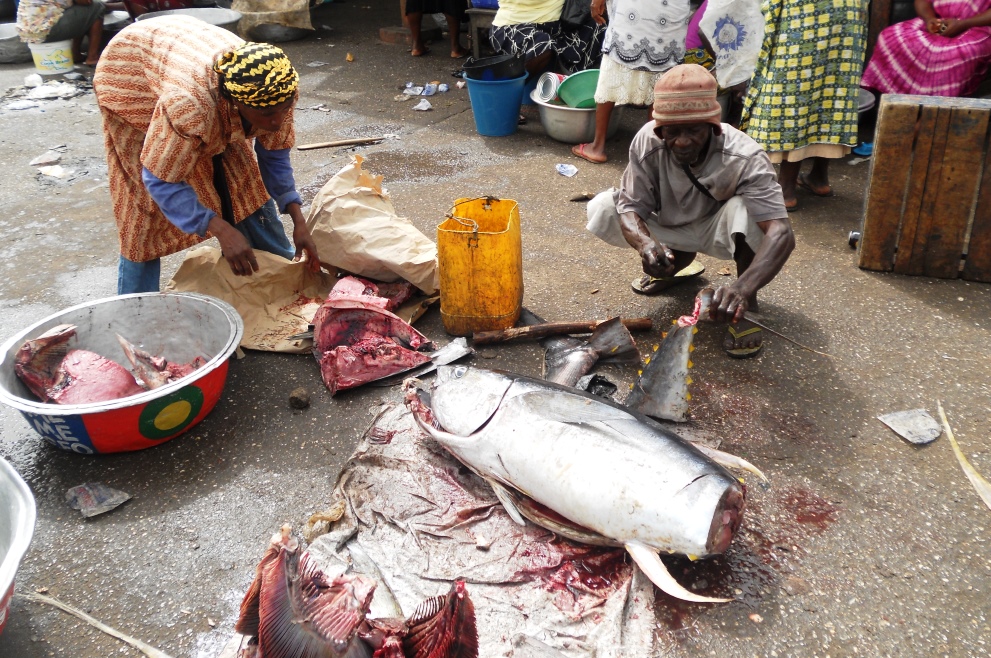
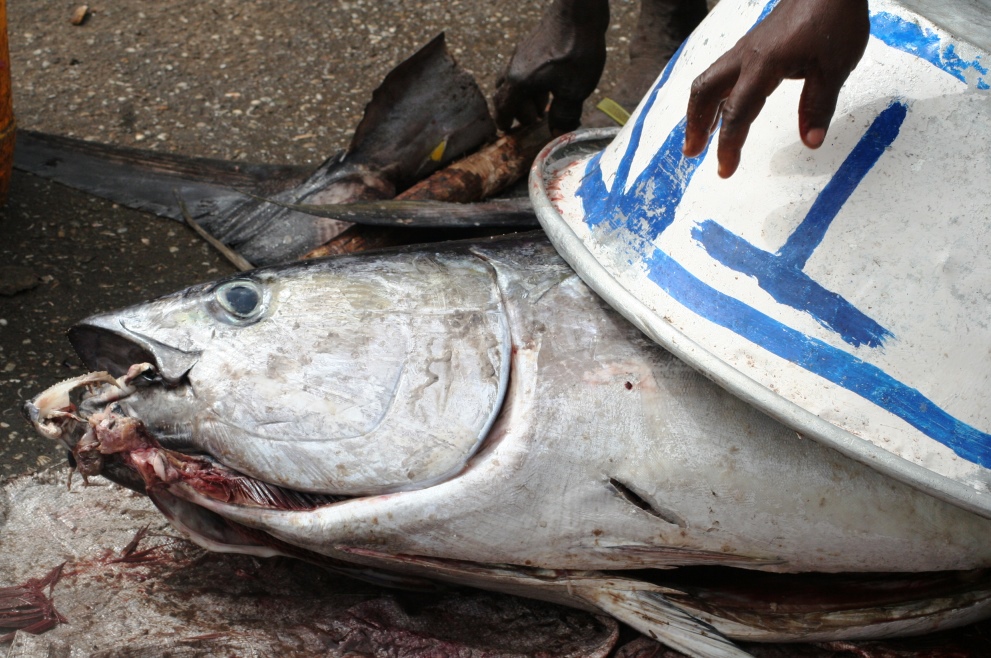
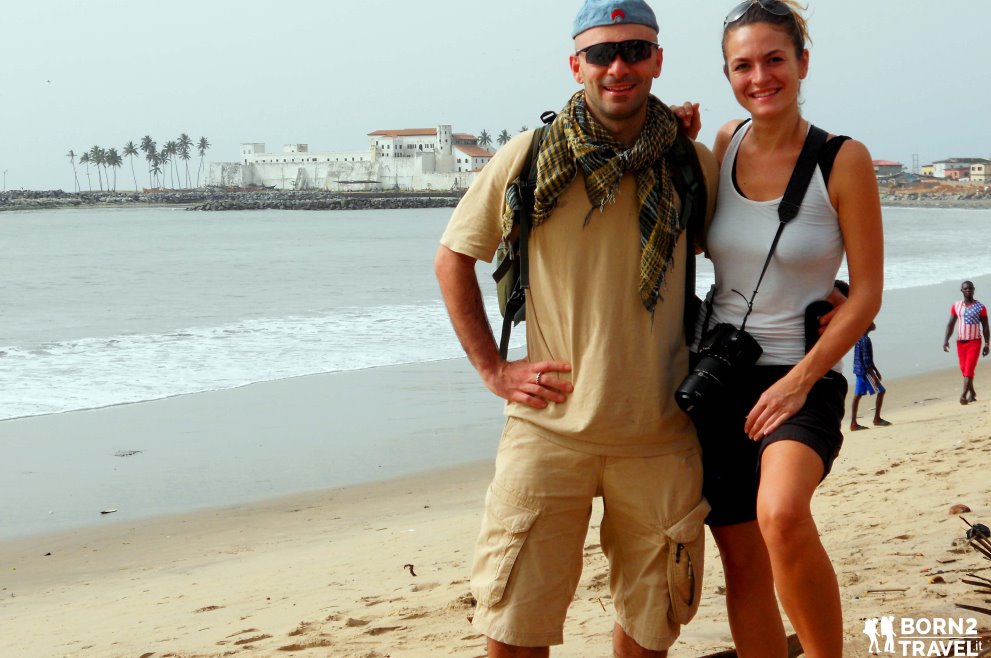
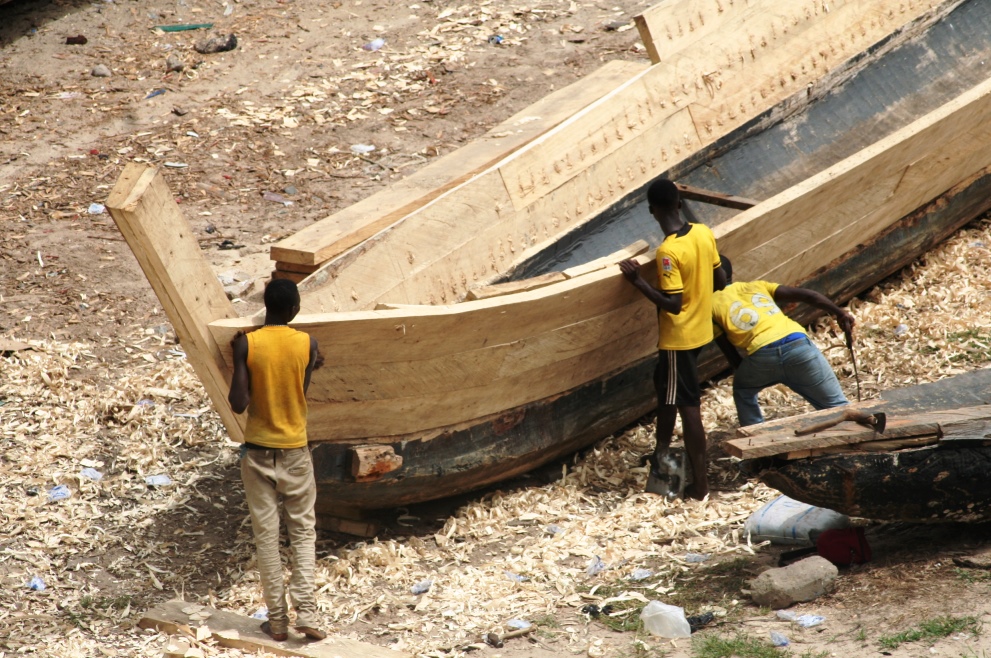
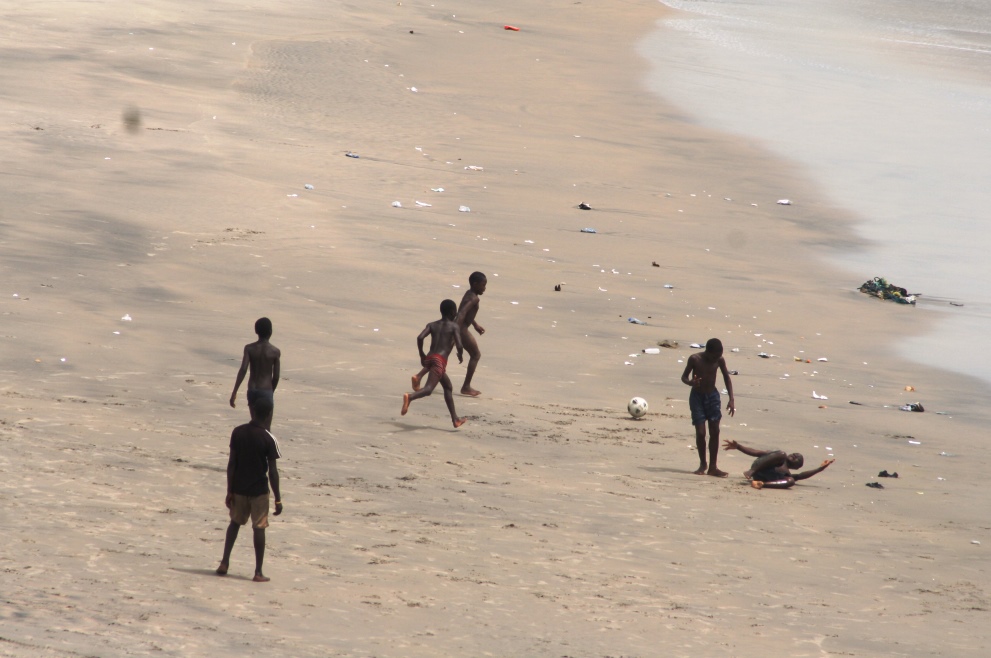

We reach the Kakum National Park, it is not a particularly rich reserve of fauna, if you don't consider the millions of insects, but its majestic and tall secular trees and the dense vegetation surely make it very suggestive.
You will love the seven suspension bridges that allow you to make a "canopy walk" 30 meters from the ground making you enjoy a privileged view of the immense park.
When the sun disappears on the horizon and the darkness engulfs the whole landscape, we start with Richard and Prince for the "Masomagor Tree Platofrom", a platform built on a tree 30 meters high where we will spend the night.
We wanted to savor some of the forest life and, guided by our rangers, we grind a long way along steep paths illuminated only by the dim light of our torches.
At some point, someone stops ... the whole row slows down and I don't have time to understand what was happening that we begin to feel nibbles on all our legs ... we ended up in an area of killer ants ... every bite is very painful and no one is spared. ... we are struggling enough to find a safer area to free ourselves from these unwelcome guests.
Shortly before arriving at our tree we stop, turn off all the torches and let ourselves be lulled by the sounds of nature.
Pitch dark. A deafening concert of every type of insect makes us feel so small in the presence of Mother Nature. It's a strange feeling ... you feel almost as if the sky was falling down on you ...
We go slowly on our tree and in our sleeping bags, sheltered by old mosquito nets, we spend another exciting night to remember in Africa.
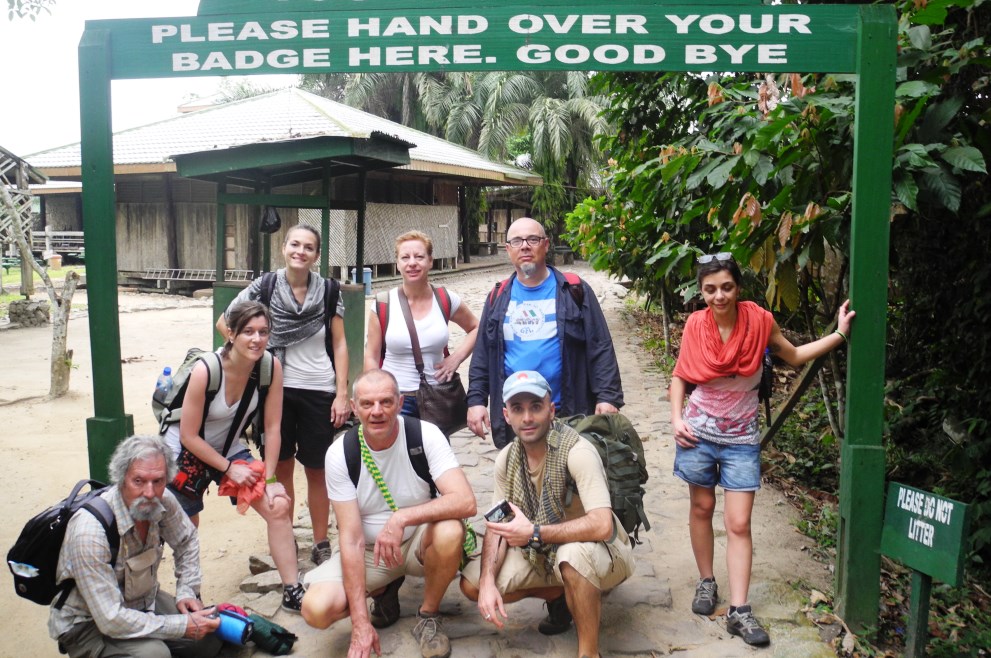
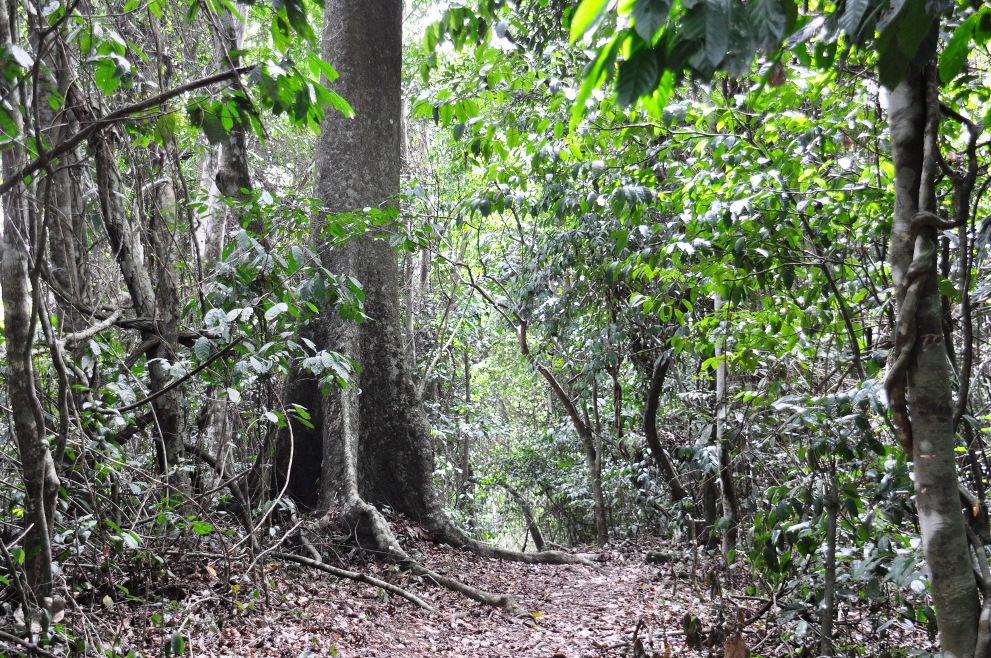
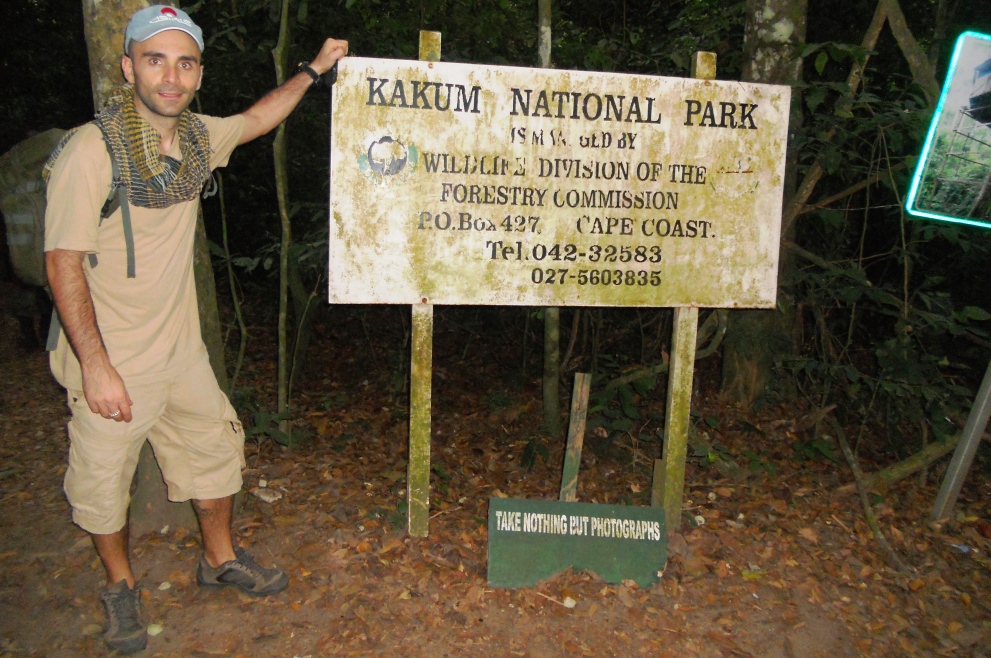
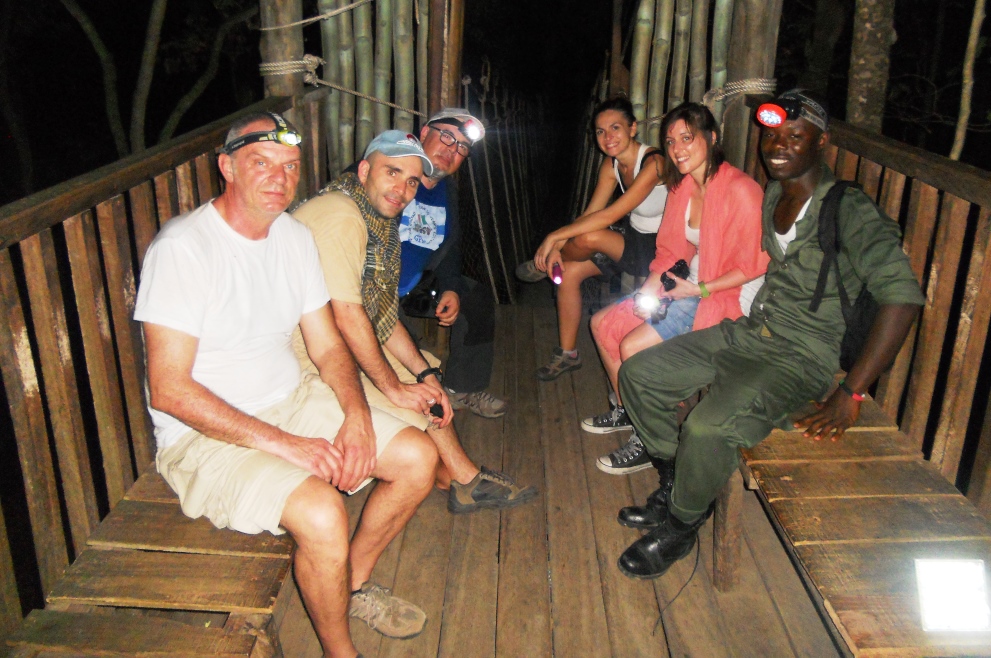
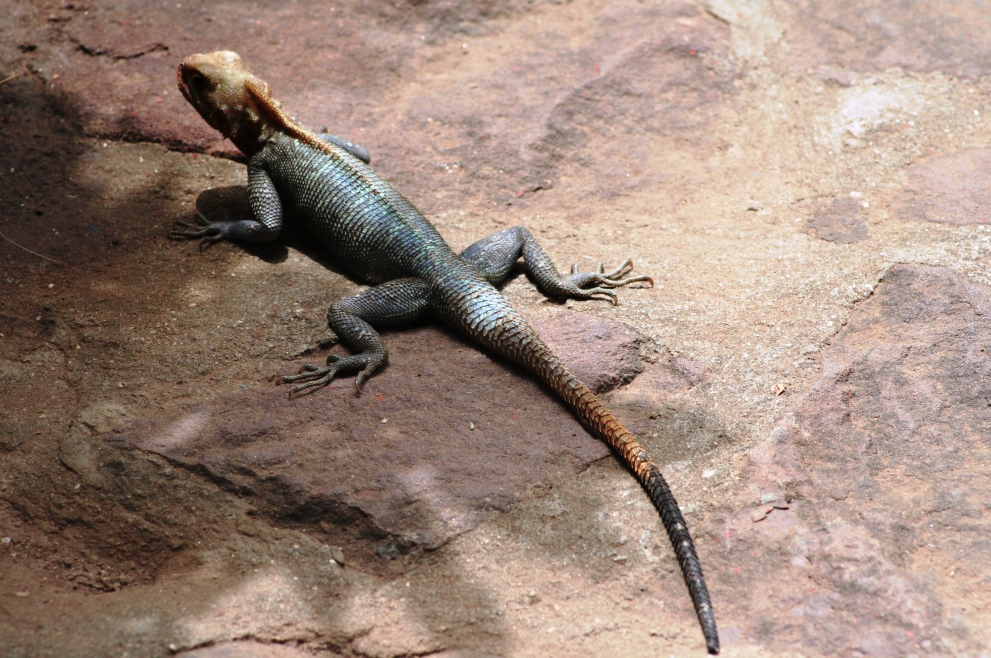
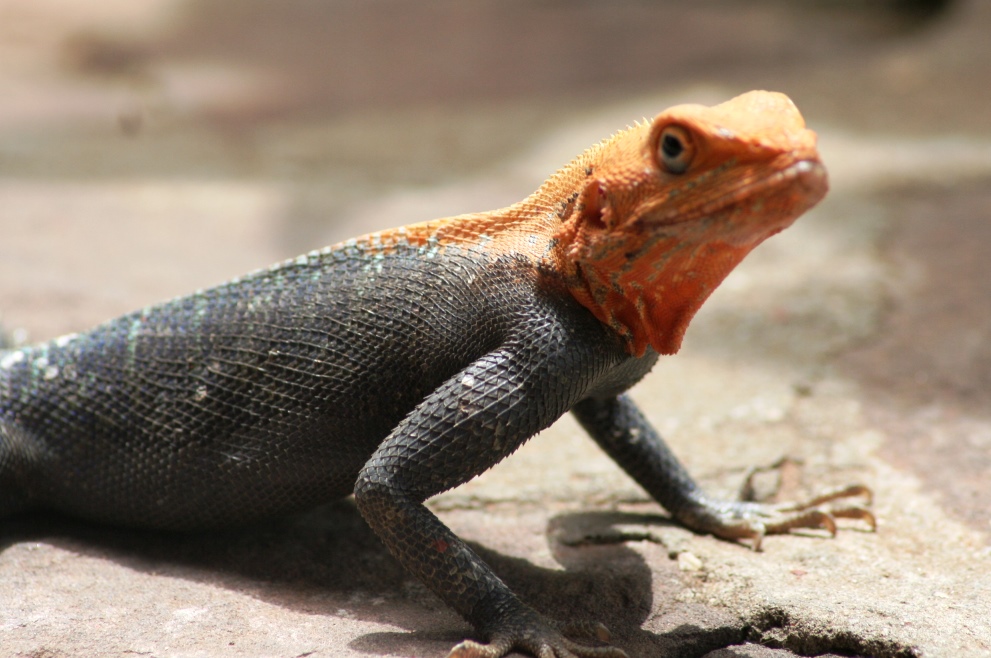
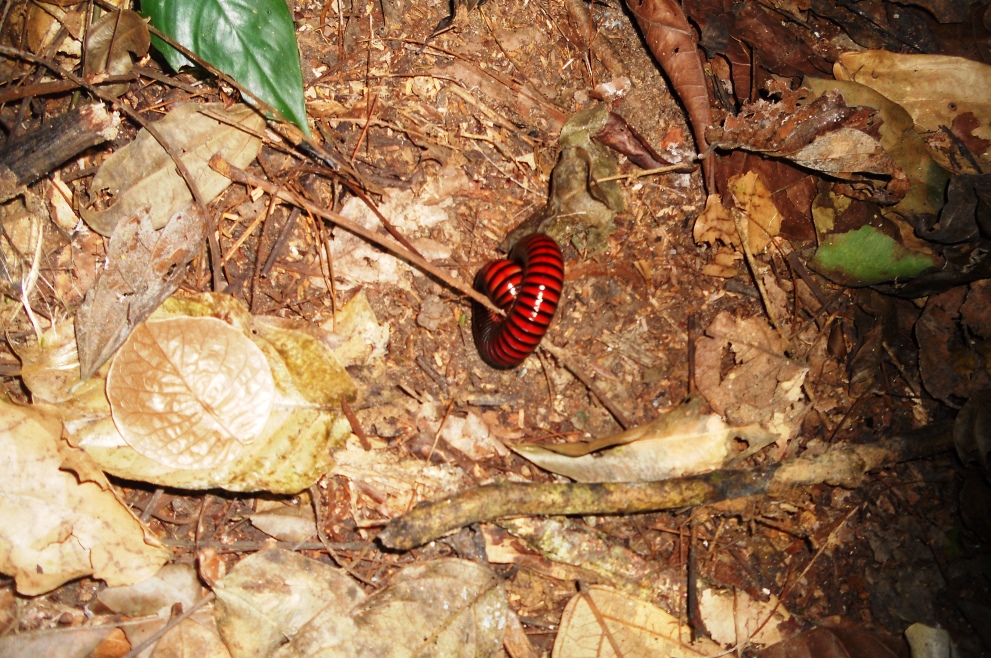
Lake Bosumtwe. Perhaps due to the haze, to the light that flattens everything but this lake has not transmitted great emotions to me then we leave again soon for our next destination: Kumasi.
Alle porte della città rimaniamo imbottigliati in un traffico assurdo.
We leave the backpacks at the hotel and immediately skirt the Kejeta Market: messed up, chaotic, huge, to go to Manhyia Palace, the palace of King Ashanti.
We visit the internal museum: a series of rifles with ornaments, gold rings, huge bracelets, statues representing past kings with their mothers, old thrones and appliances from the beginning of the century, so rare in such a place ...
We enter the big market, the box offices are endless, full of fabrics with their tailors, pots, beauty products, clothes of all kinds, spices ... women with their children tied to their backs or with huge items on their heads, cans of water included ... in short, every woman brought something somewhere, busy they freed themselves in that infinite chaos ...
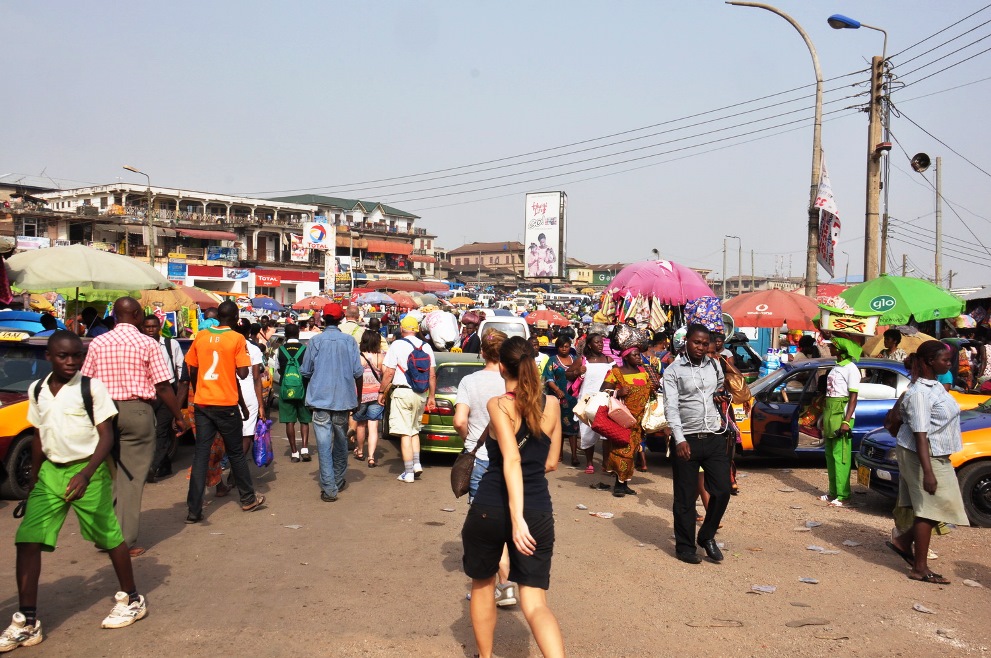
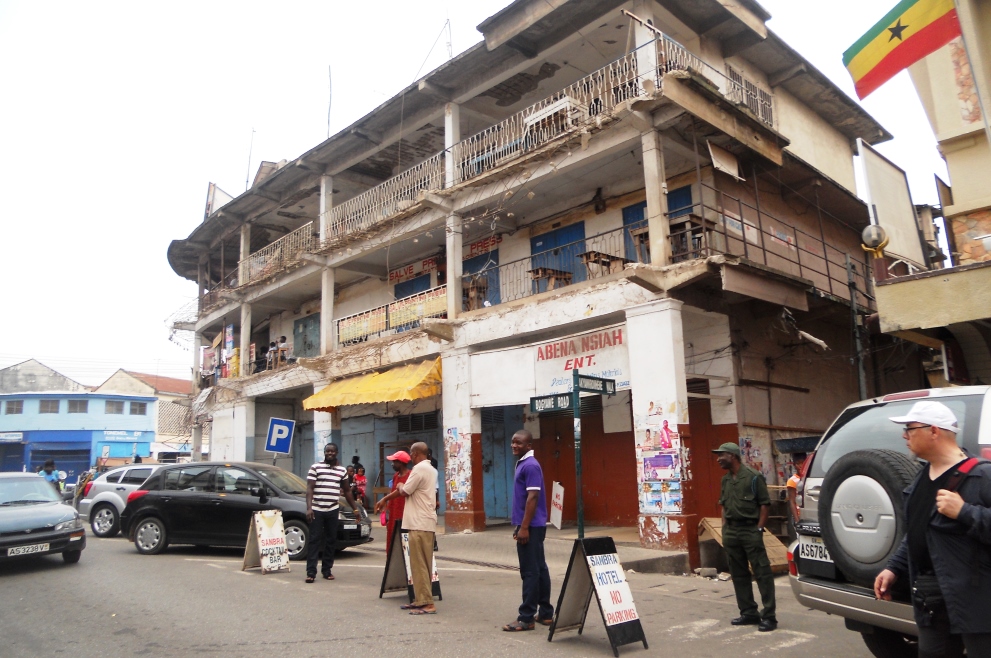


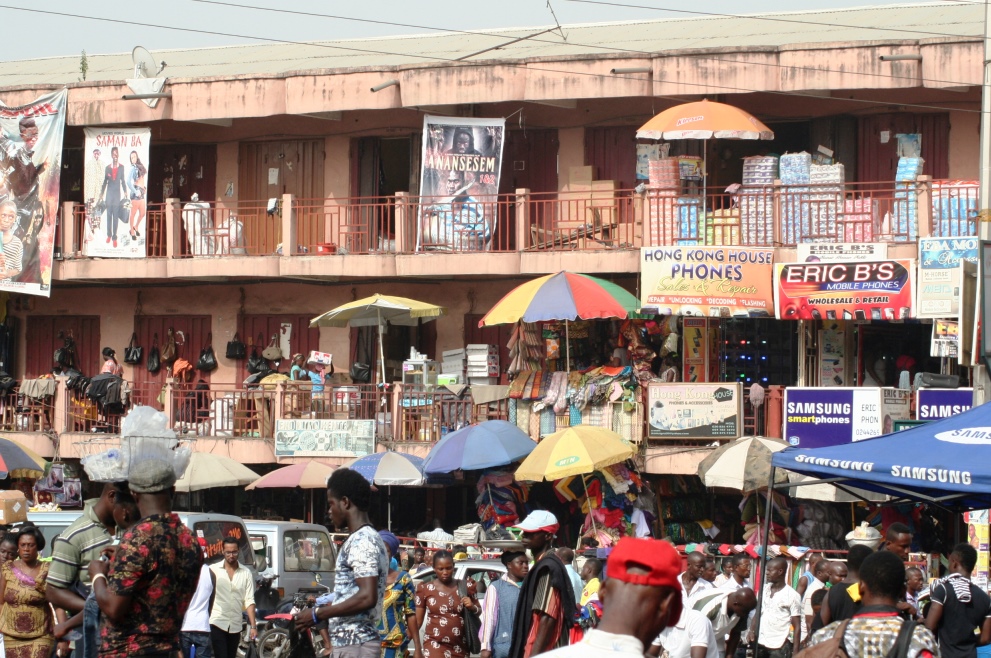
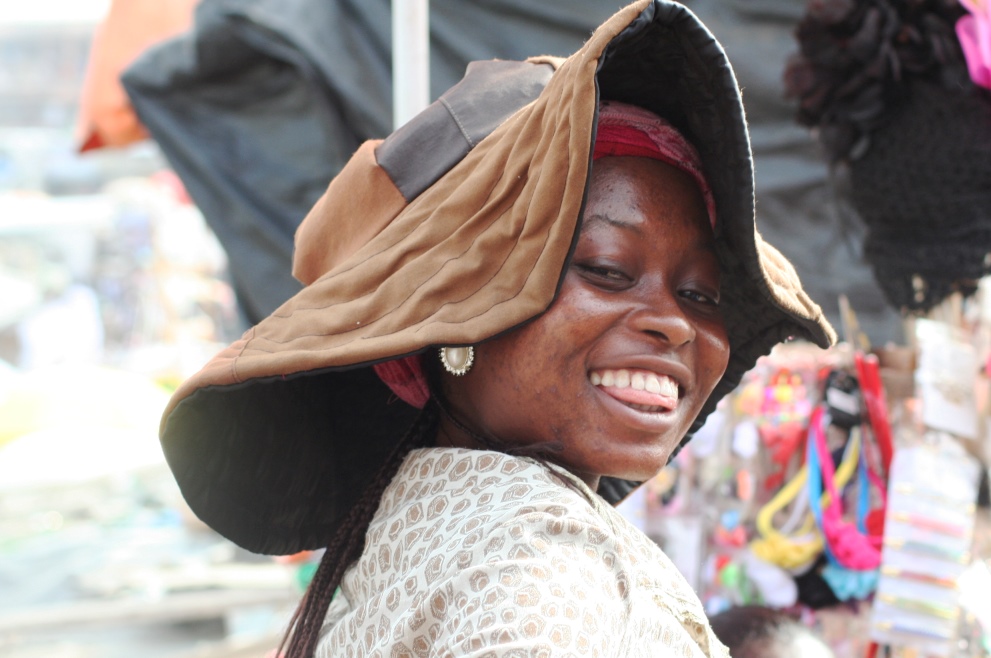
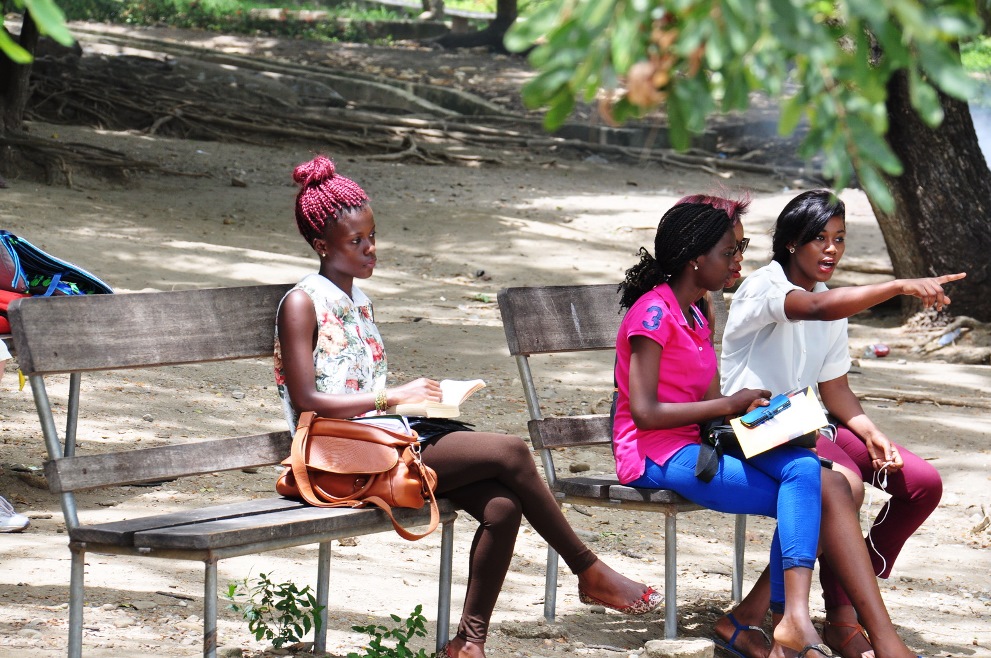
The butterfly does not count the years, but the moments: for this its short time is enough!
African proverb
A long transfer takes us from Kumasi to the north of Ghana, we cross almost the whole country. We see different realities of this small nation ... the whole background changes, the churches are always less, in their place arise, sly, the first mosques; the masonry houses make space for mud and hay huts; the dense vegetation of the coast is replaced by the red earth. It is a very dry and certainly poorer area.
We stop in Ahwiaa to admire the enchanting wood inlays and Adanwomase for the elaborate kente fabrics and the cultivation of cocoa.
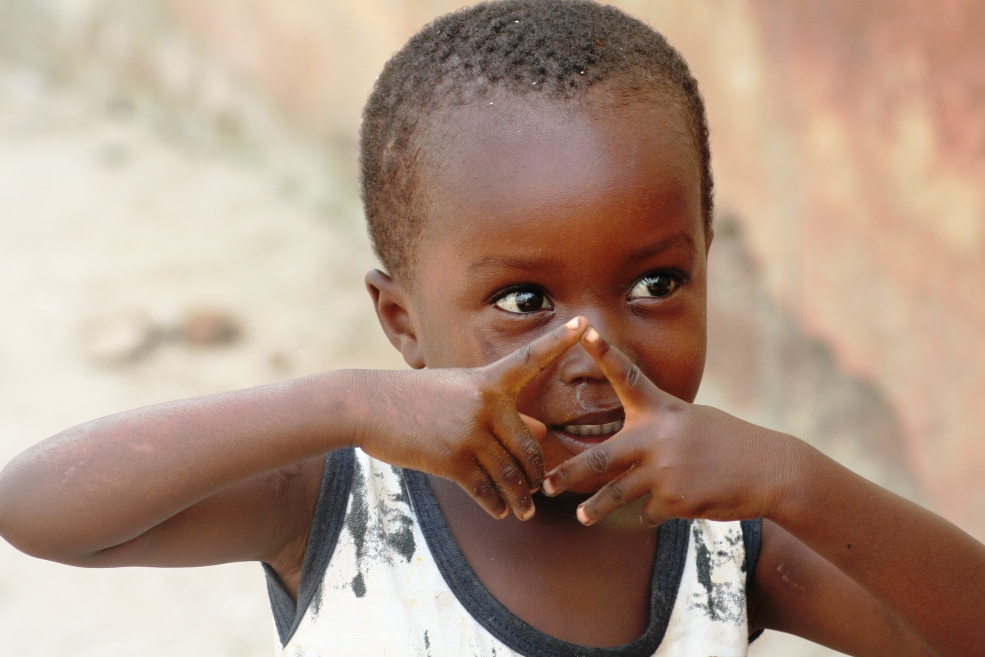

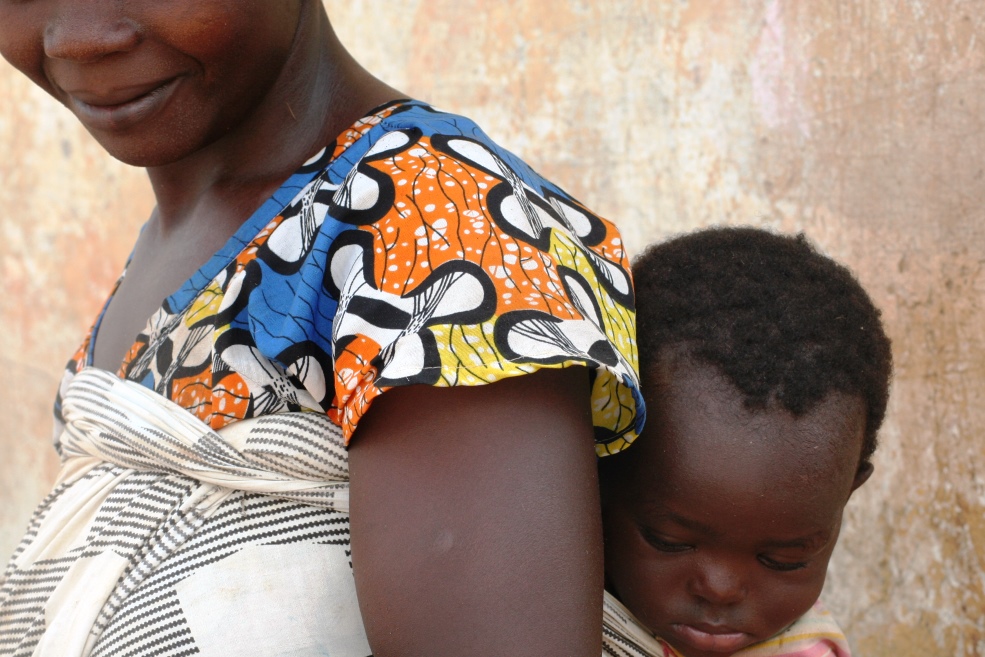
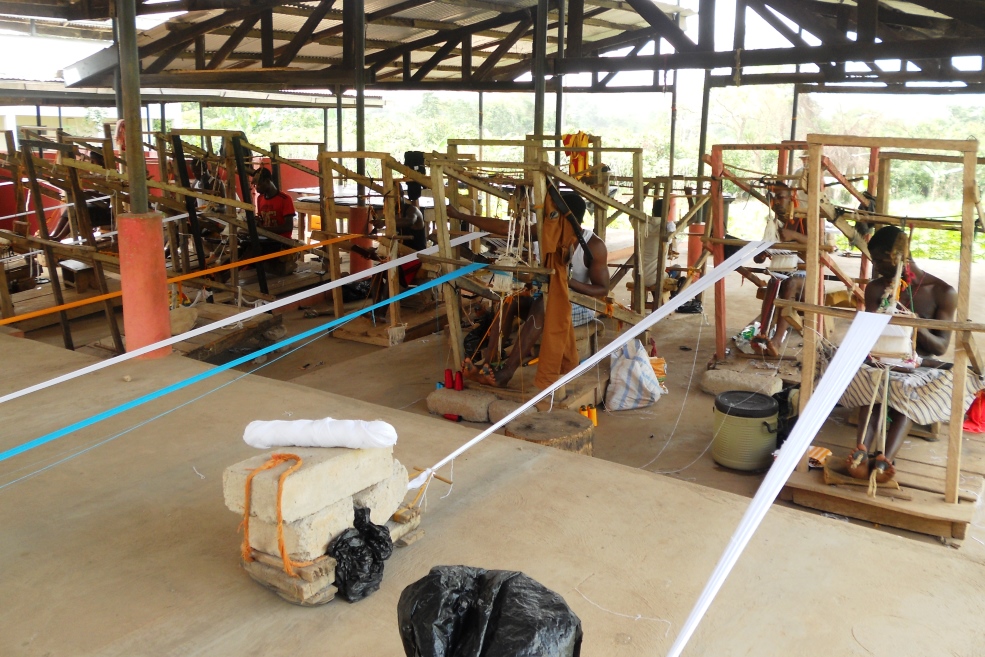
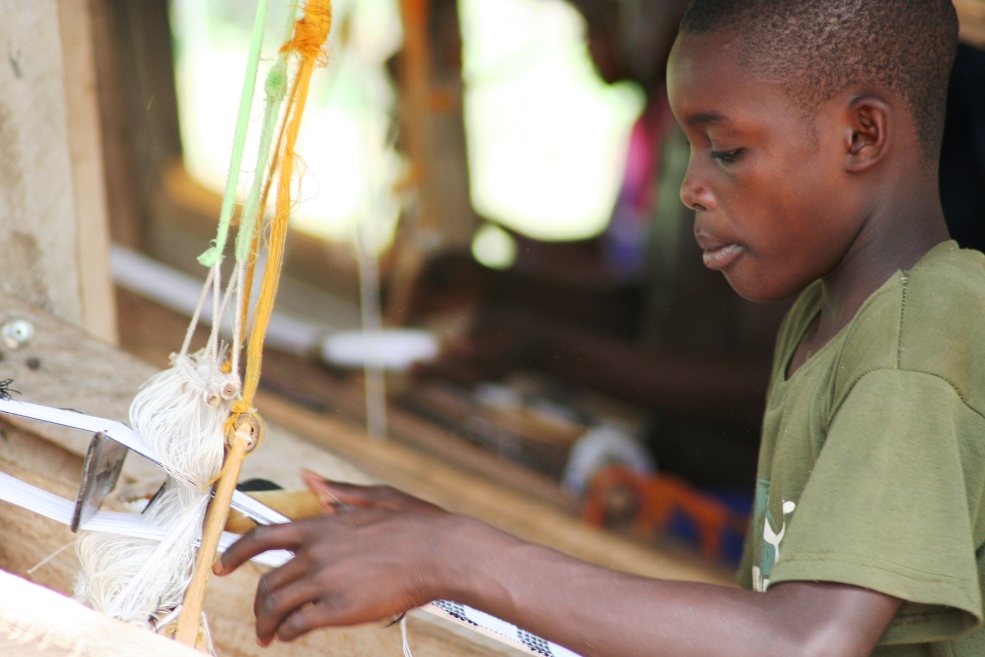
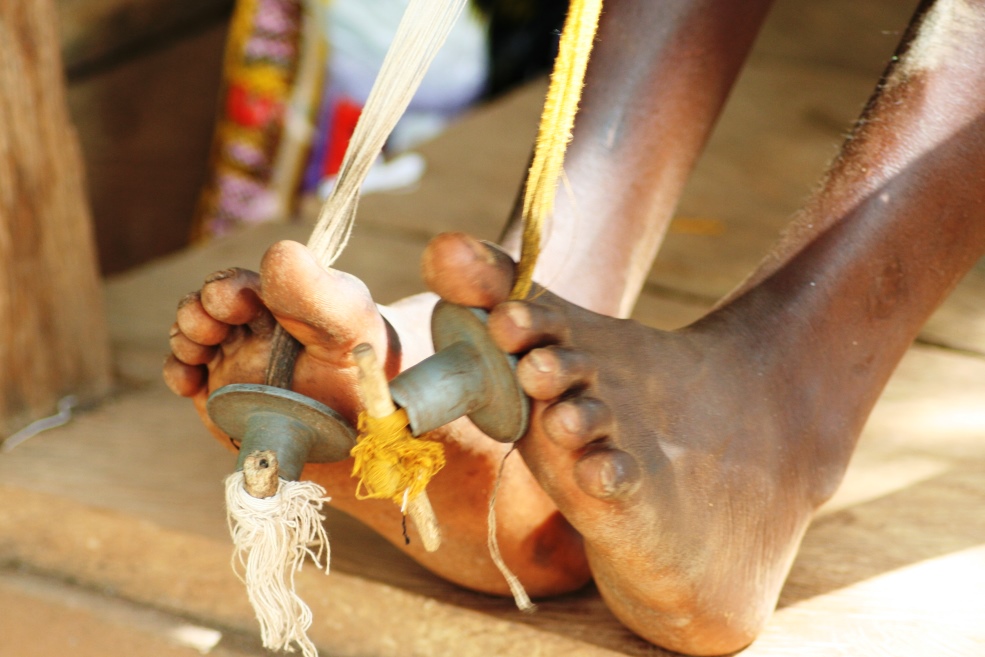
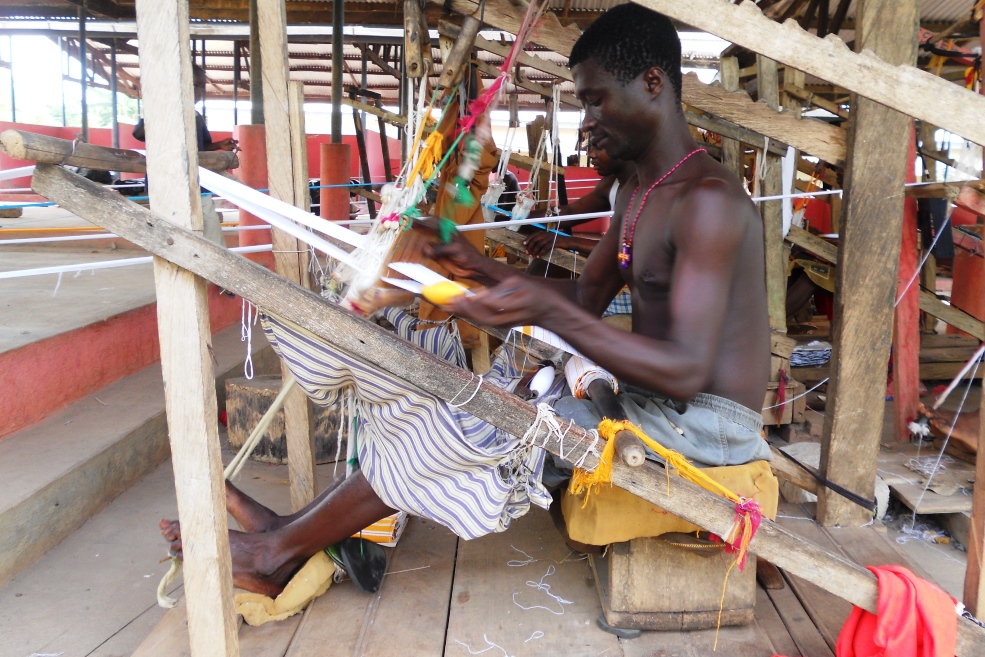
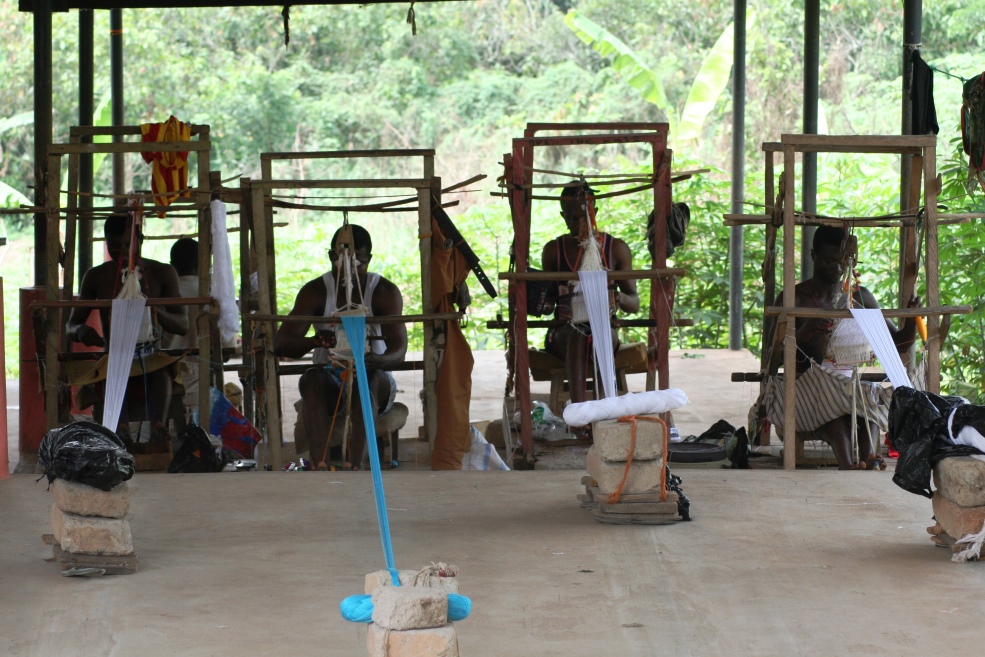
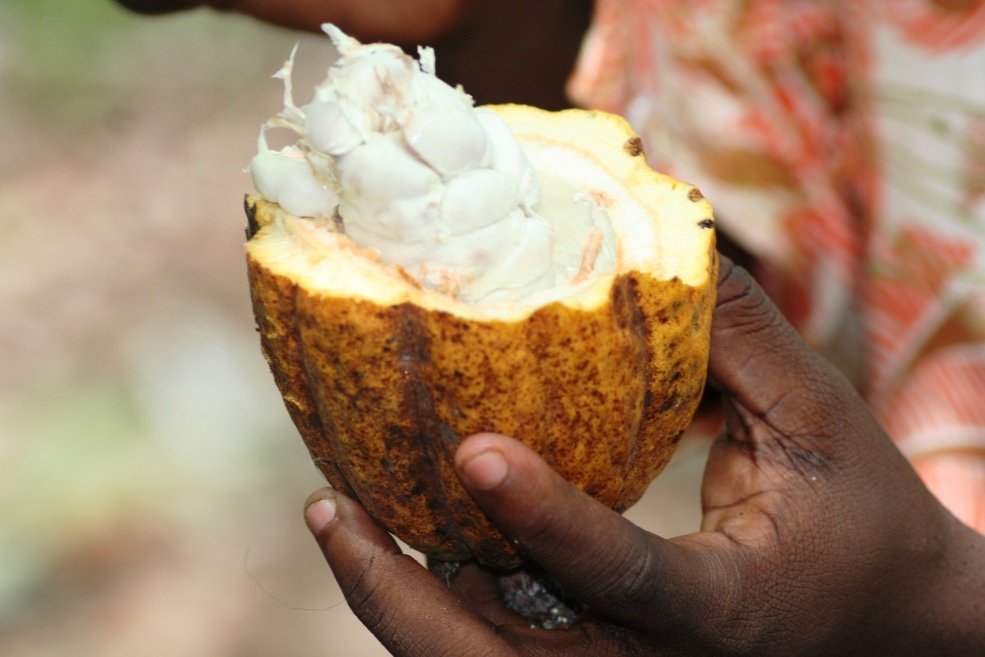
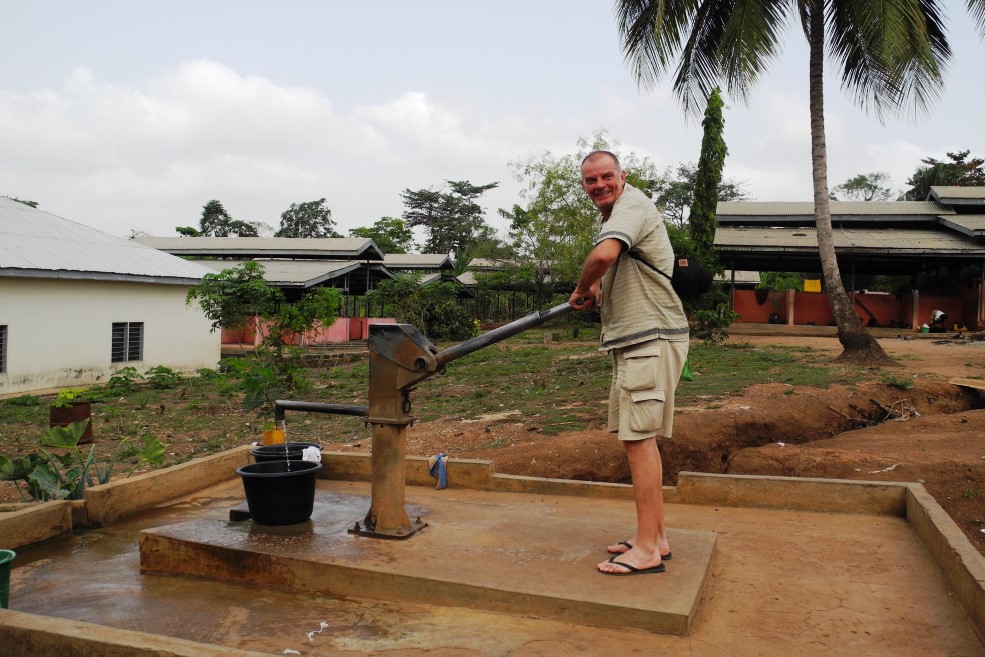
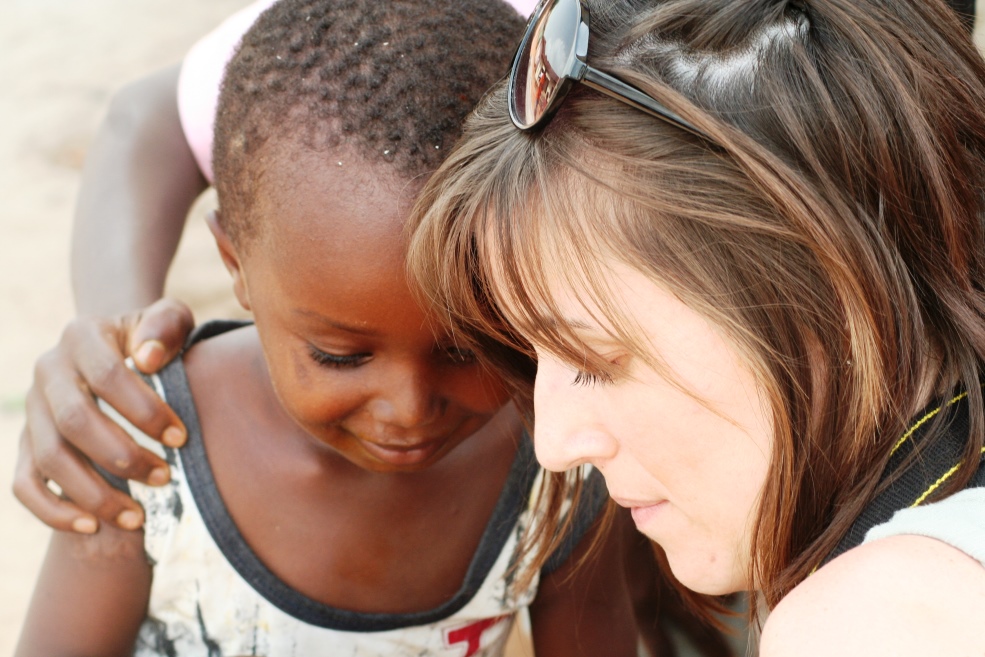
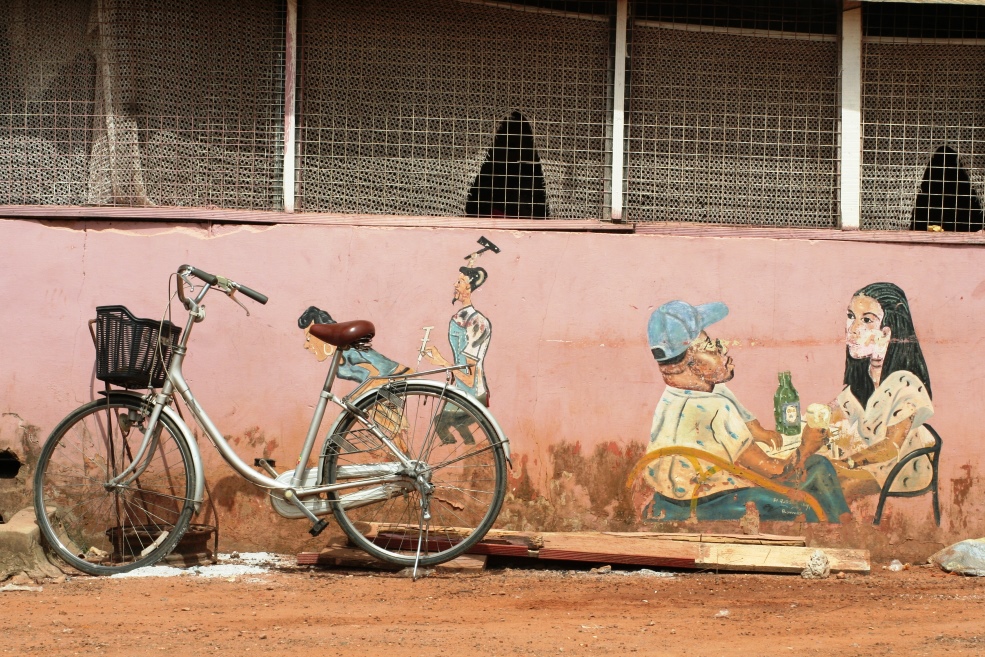
After many hours of road we first reach the cool waters of the Kintampo waterfall and, past the river Volta, which gave its name to the current Burkina Faso, we arrive in the evening at Tamale.
It is very tiring as well as dangerous to drive at night ...
We are guests of some nuns Carmelite Filipinos and Nigerians who live praying in contemplation. This place is strange, you can breathe peace and tranquility in the air.
The sisters prepared a lavish dinner of rice and chicken; tonight we will sleep on the benches of the monastery!
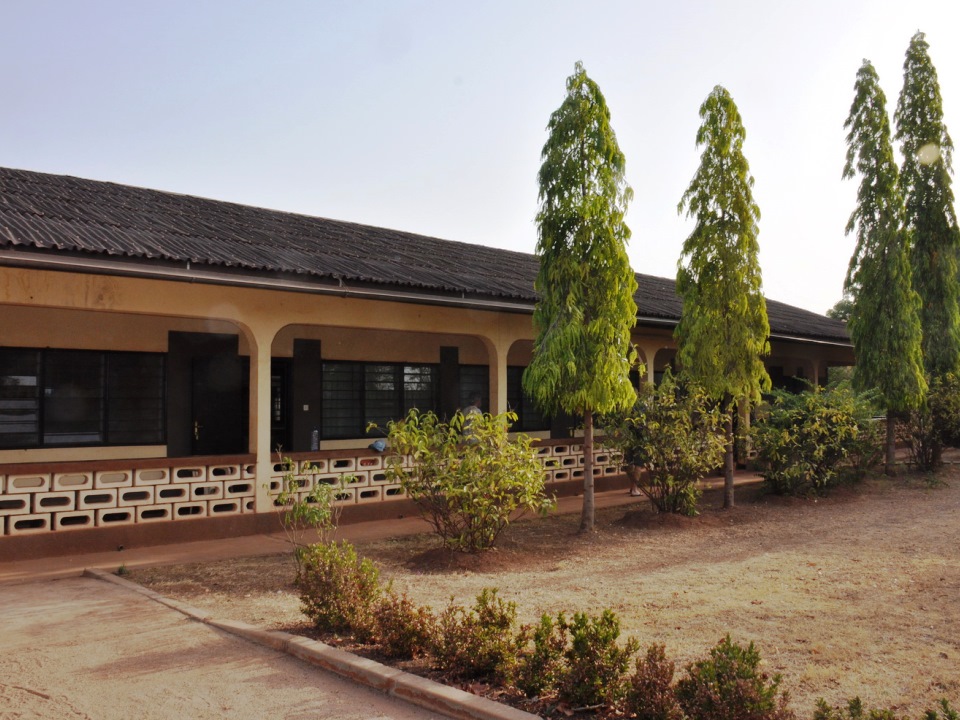
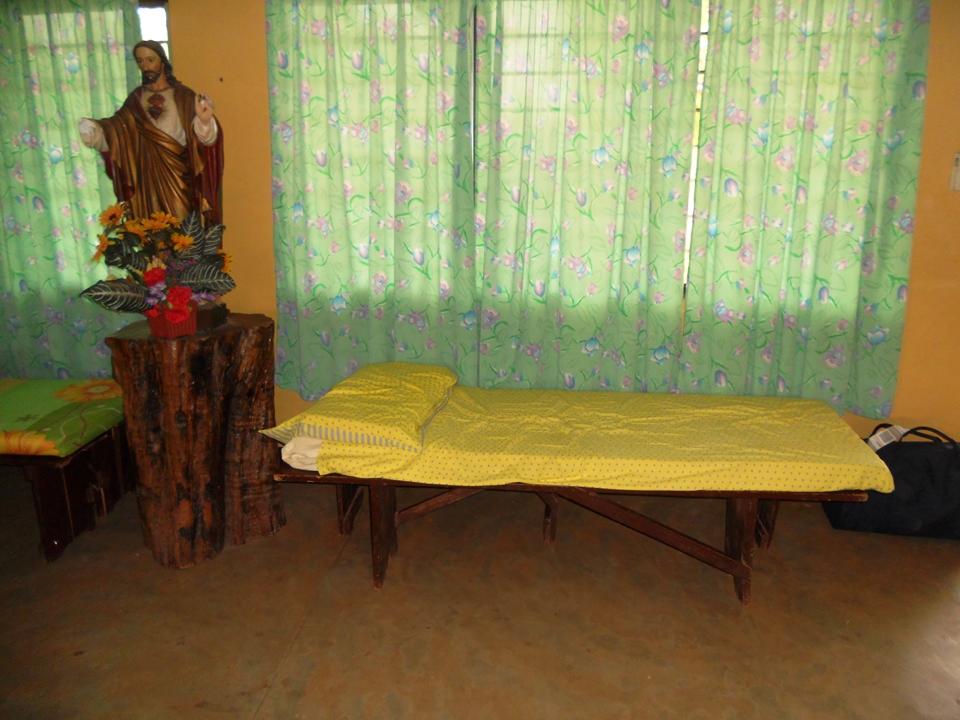
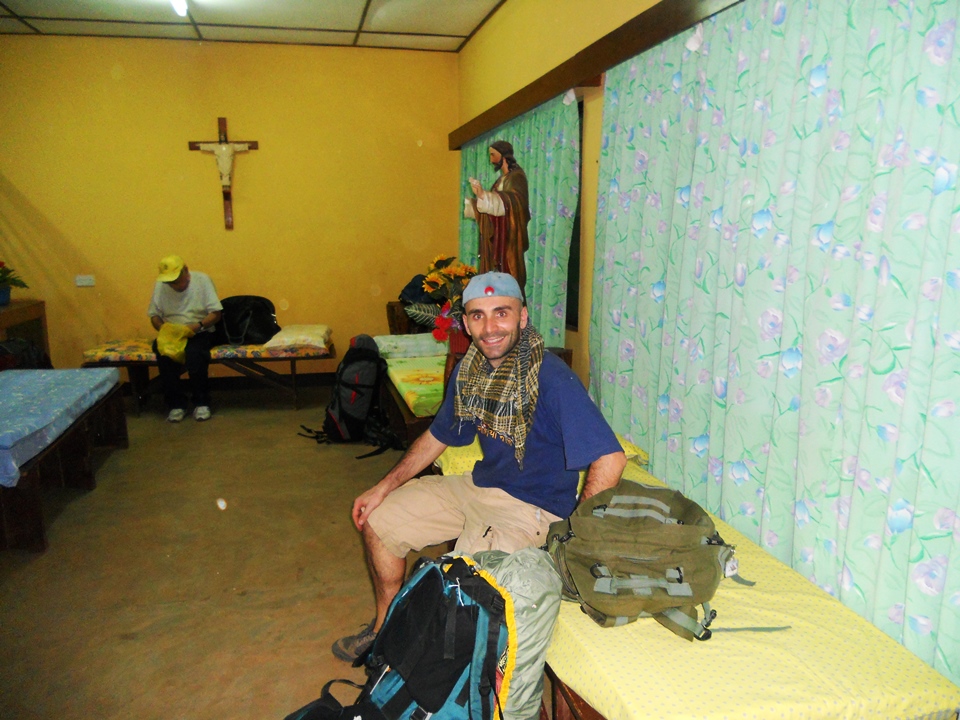
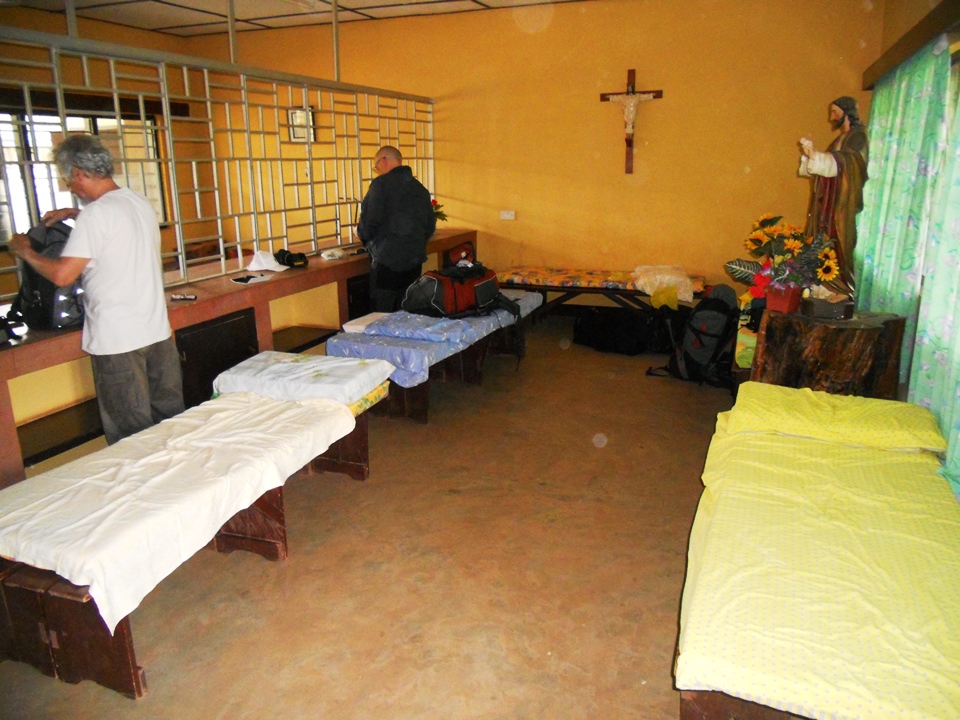
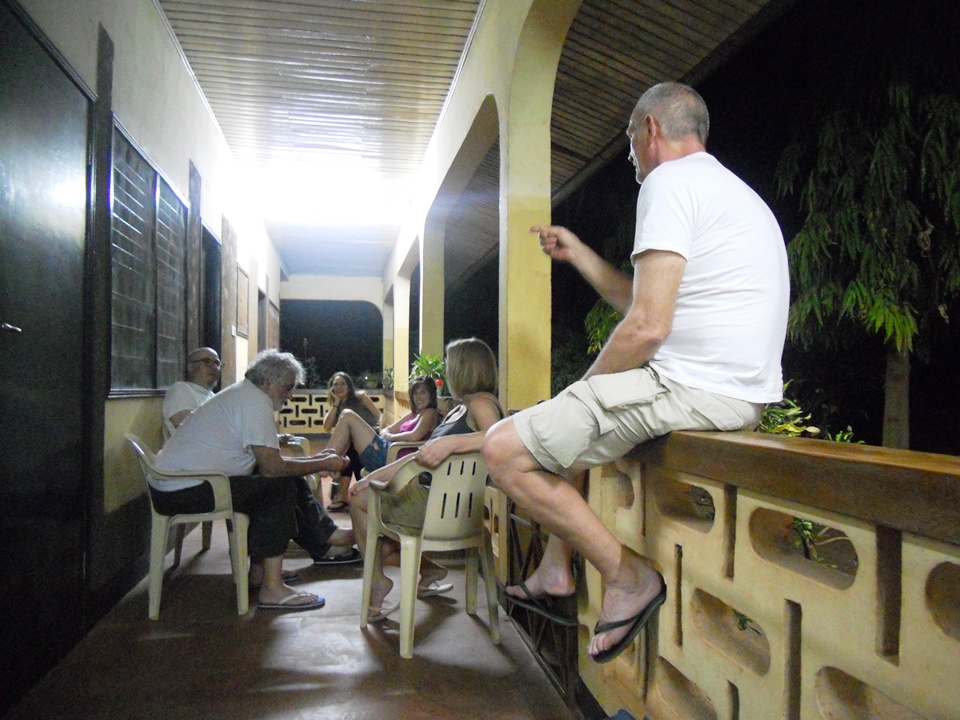
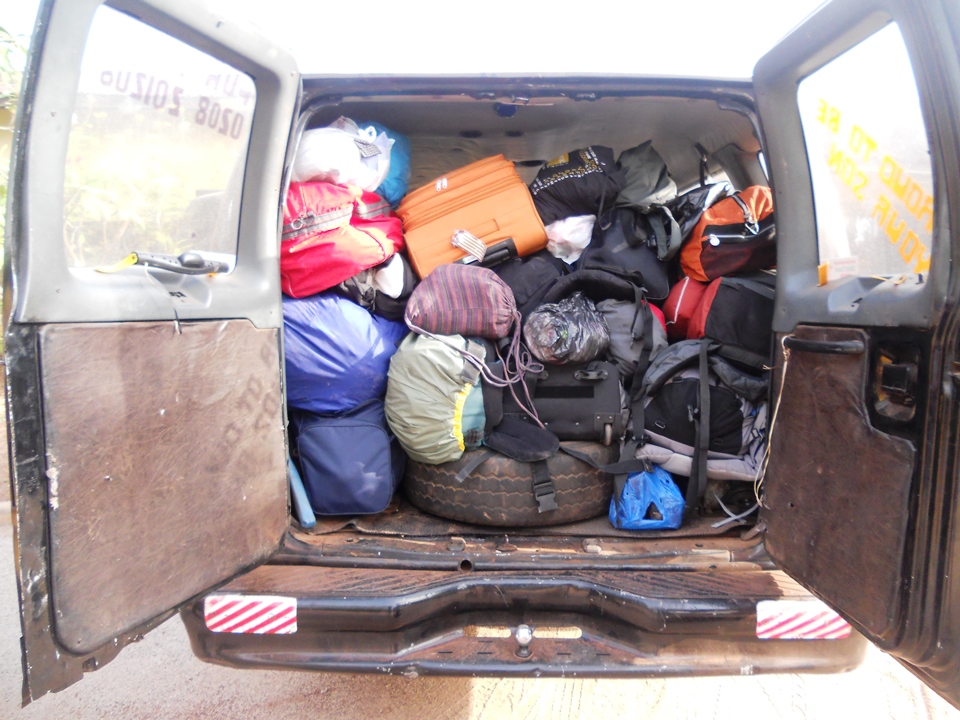
Leaving the chaotic Tamale we head south towards Natchamba and the border with Togo.
Huts with straw roofs completely empty inside except for a few sacks used as beds and some pots piled in a corner. Women sitting in a semicircle in front of their huts, children with eyes so large that they are mirrored.
We are in the world of the Dagombo.
We take out packs of candy and the joy on the faces of both men and children dazzles us.
We had fun inflating balloons and flying them over our heads.
I saw sunny faces, proud looks and honest smiles so sincere as to break down every barrier, distrust and difference that, mistakenly, someone might think existed between us whites and them: radiant ebony population.
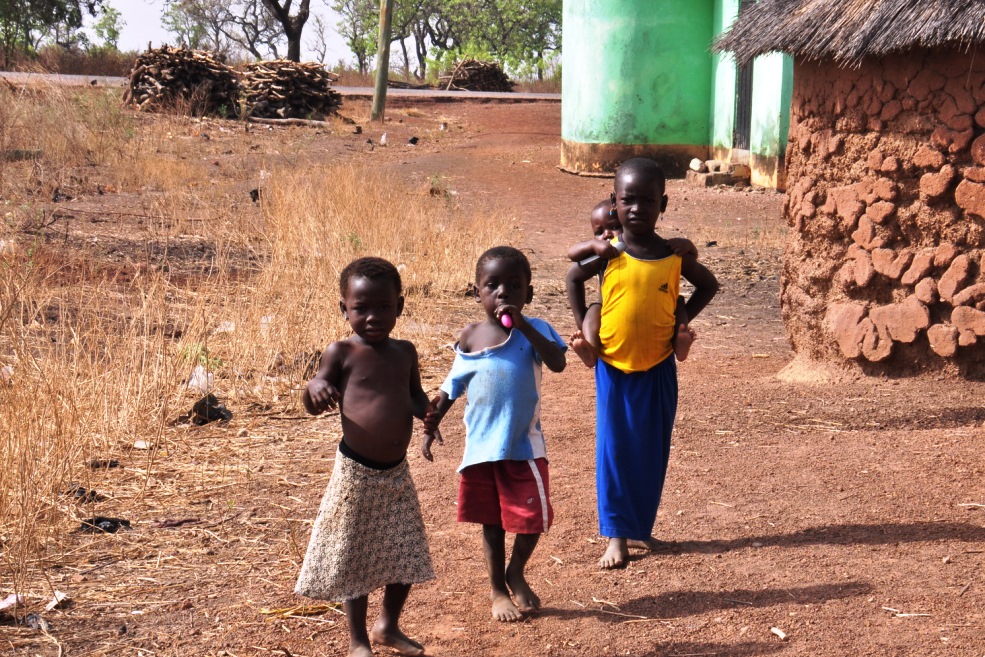

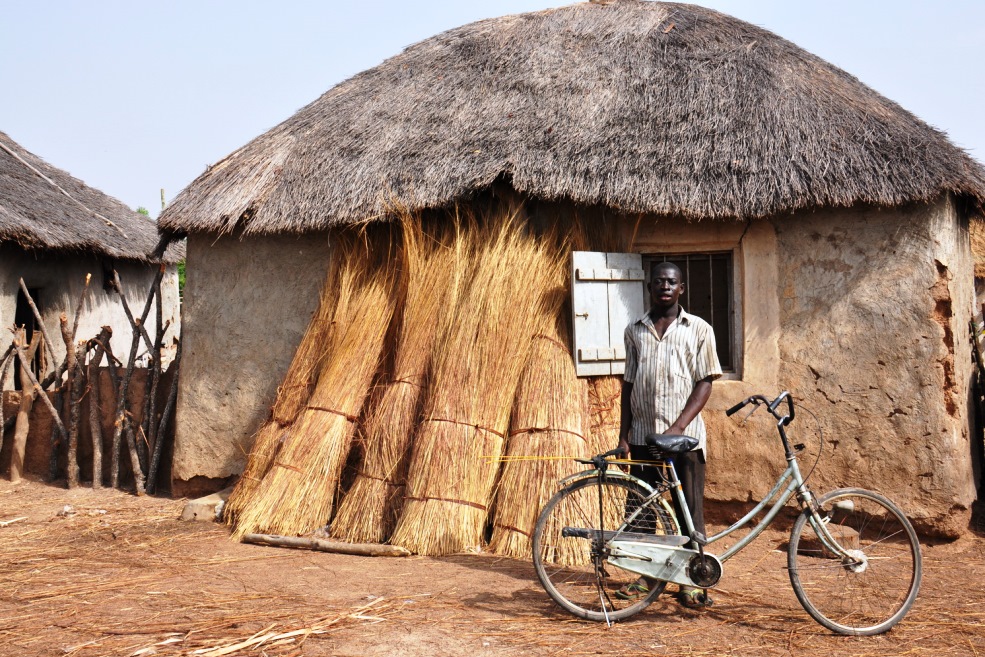
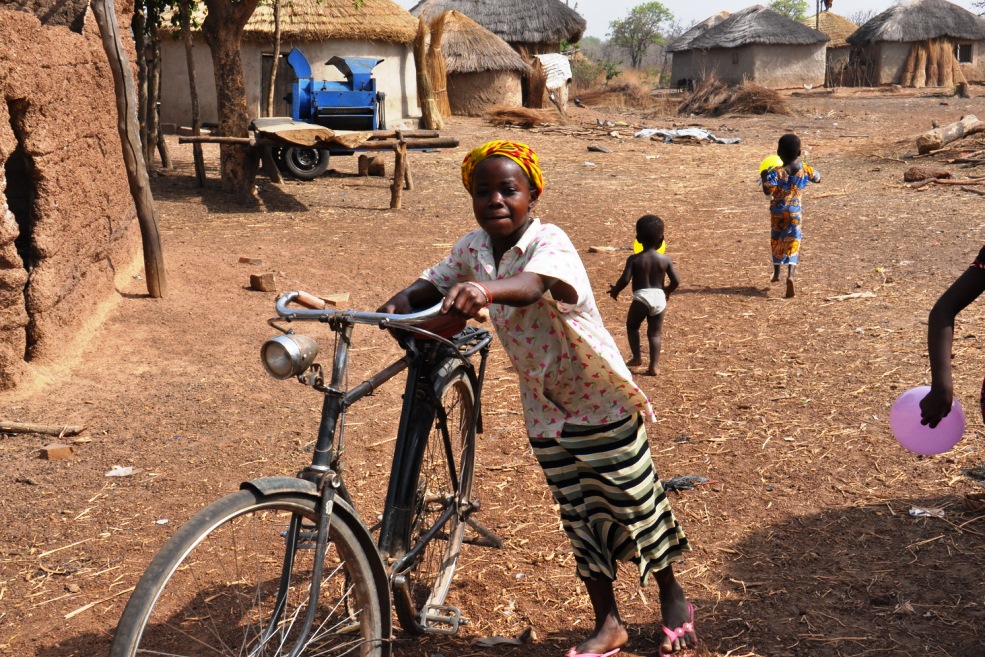
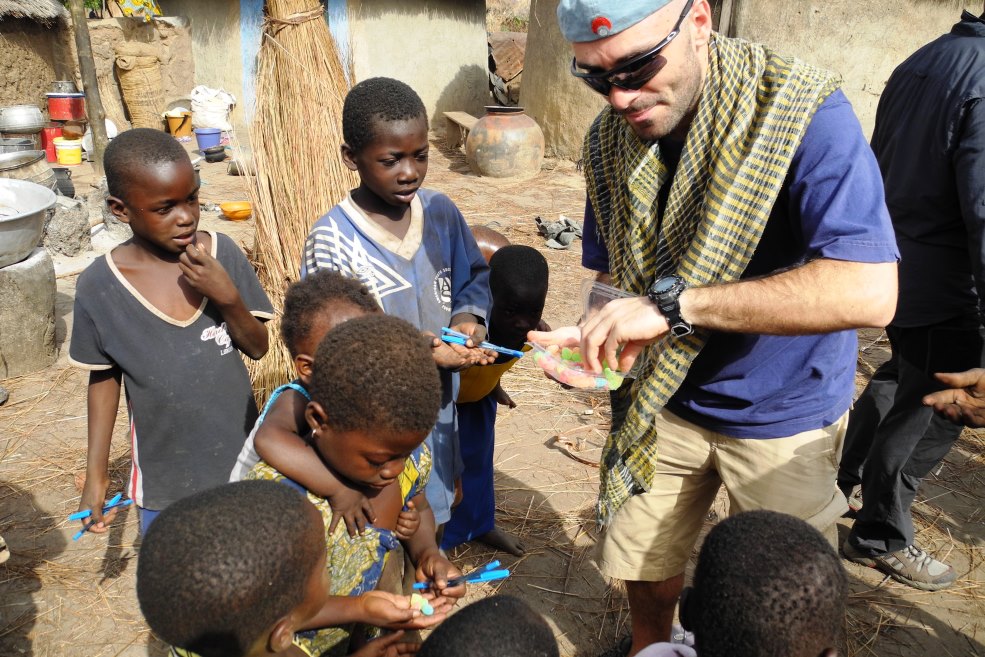
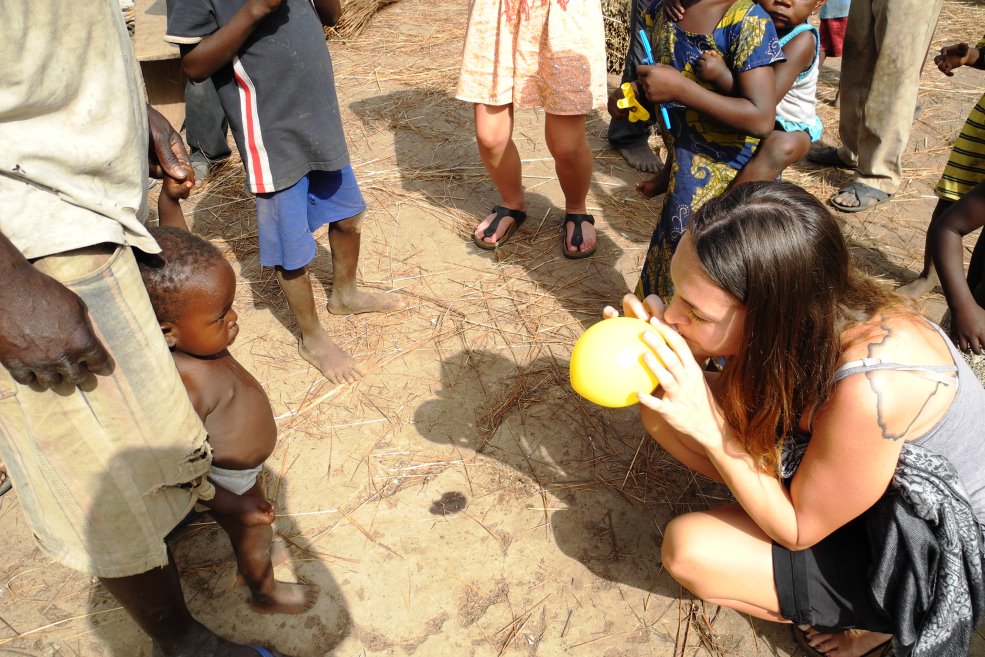
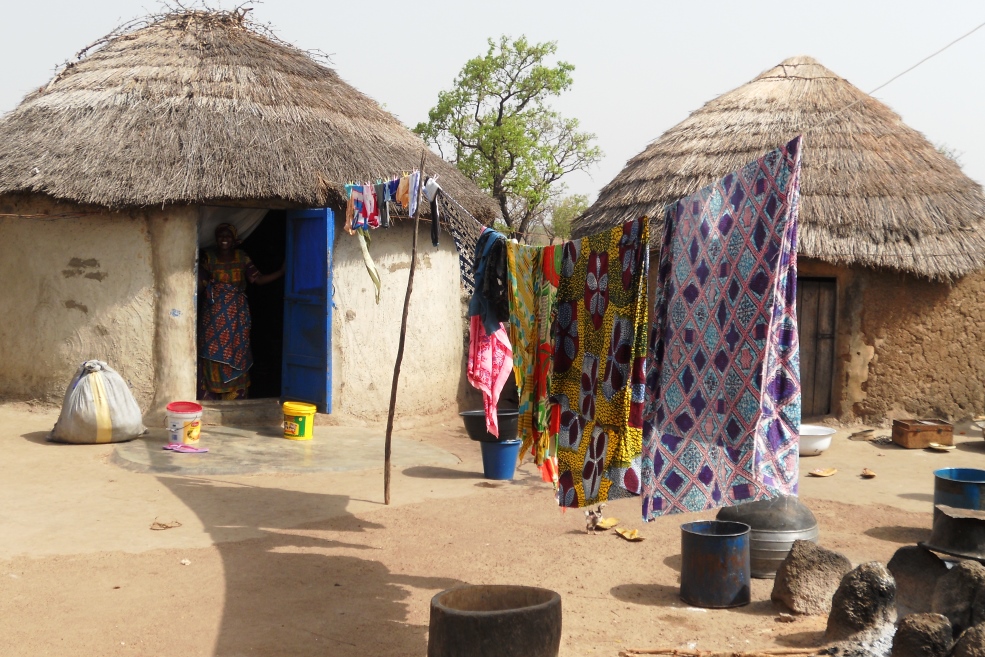
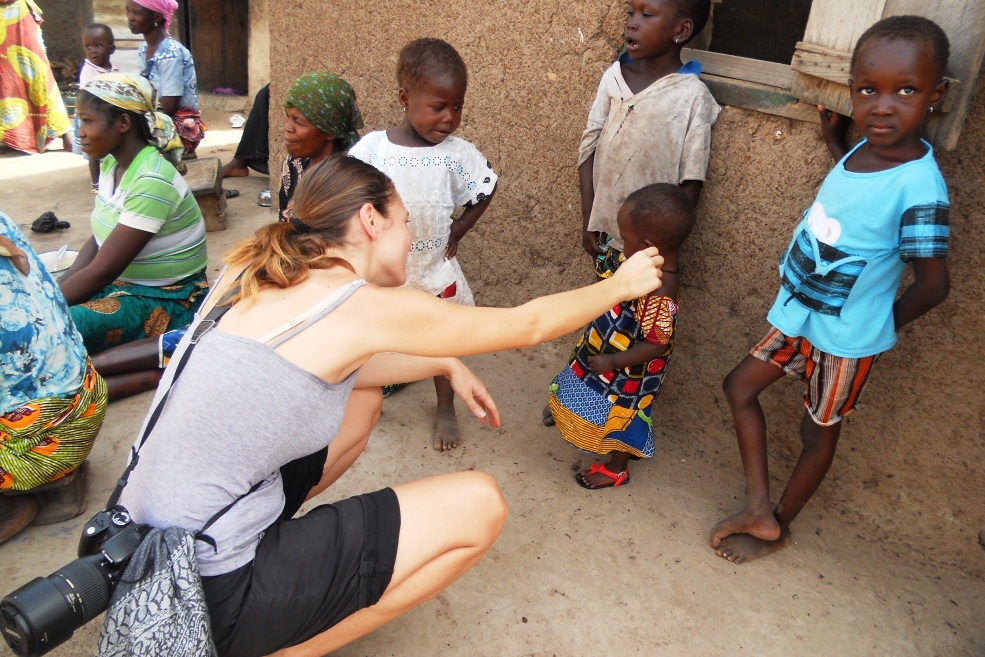
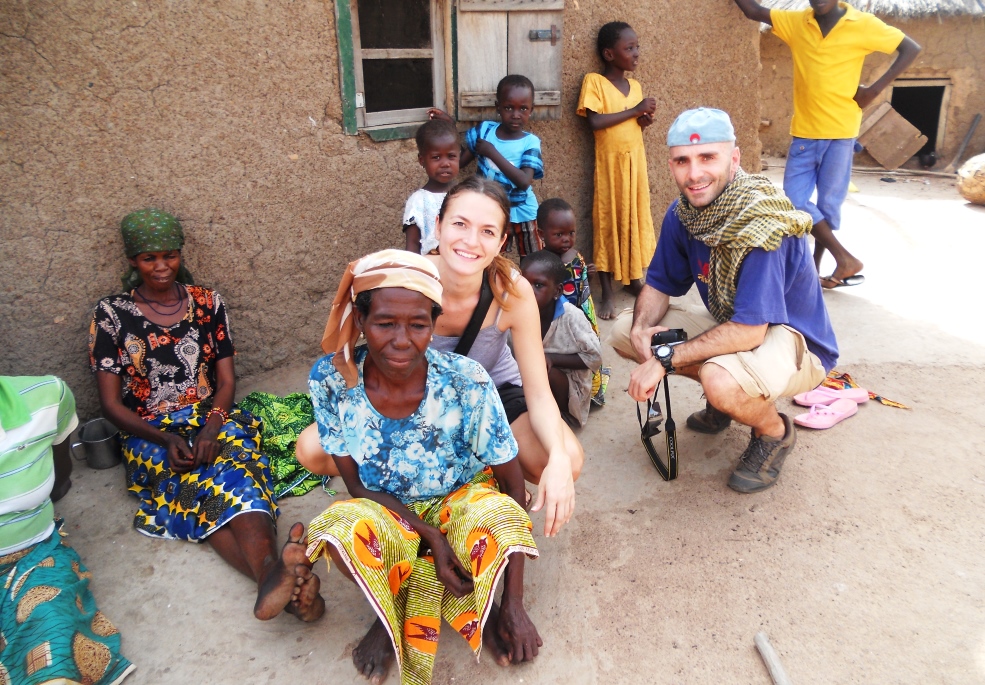
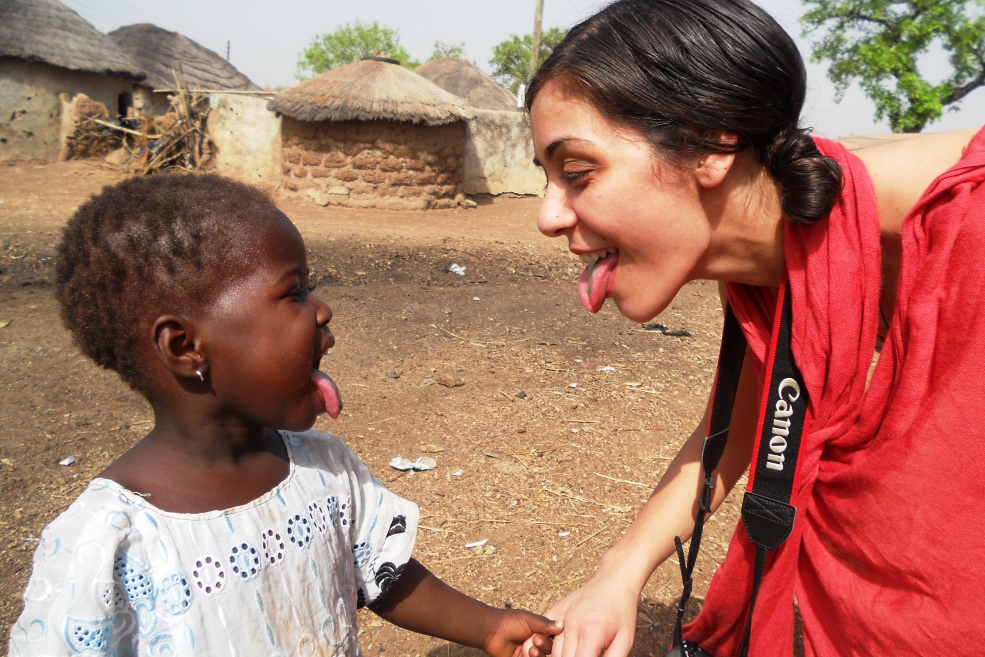
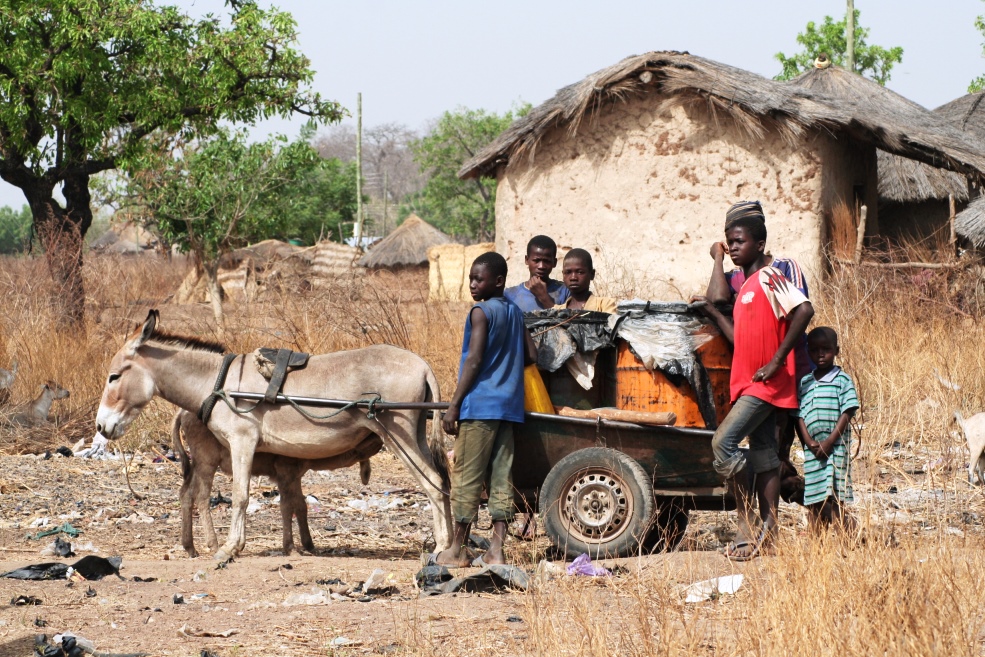
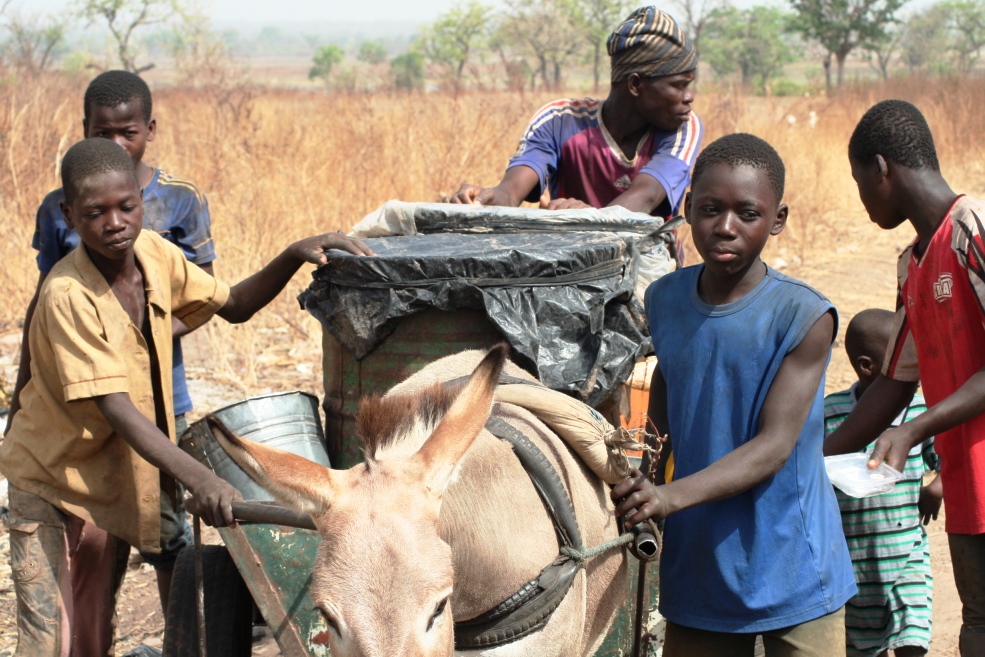
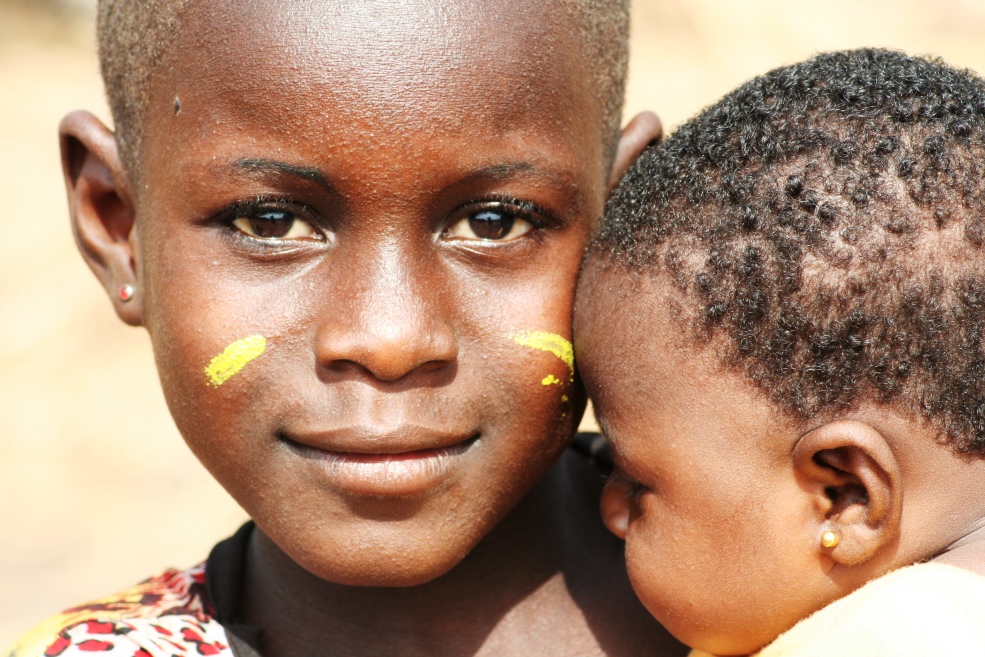
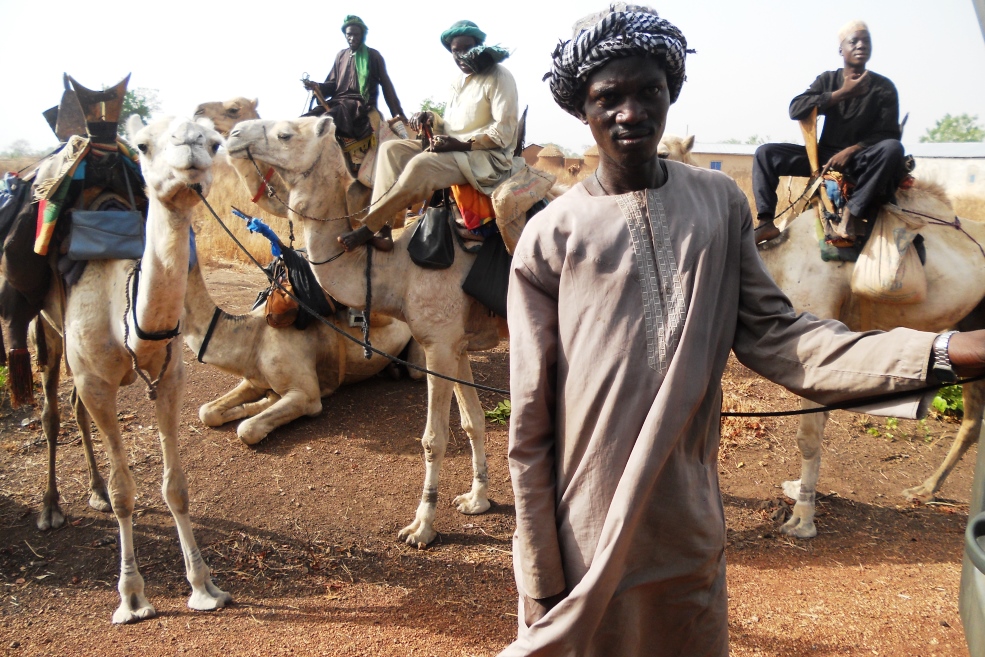
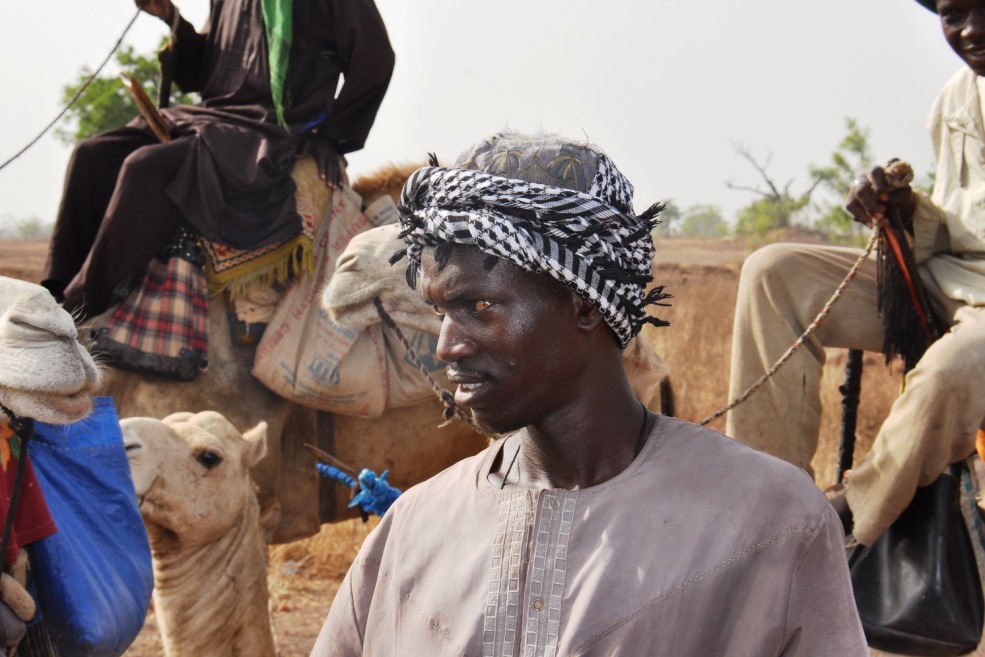
In Sang we stop to visit the orphanage "Nazareth Home for Gods Children" headed by Sister Stan Terese Mumuni and which is dedicated to orphans with serious medical problems; it is very touching to hear the story of a similar school and in our own small way we have done everything to make the right contribution. After all, we had decided, before leaving, to visit as many orphanages as possible and without organizing visits in advance but simply letting ourselves be guided by the case ...
I kept looking at those eyes of kids so big, so young but already full of suffering ...
At Natchamba we compile the exit sheet in a small room with two or three hens that wander around, an old patched cot and a counter beyond which the two passport control officers carefully read all these Italian documents suddenly appeared before their eyes .
We are ready to enter Togo!
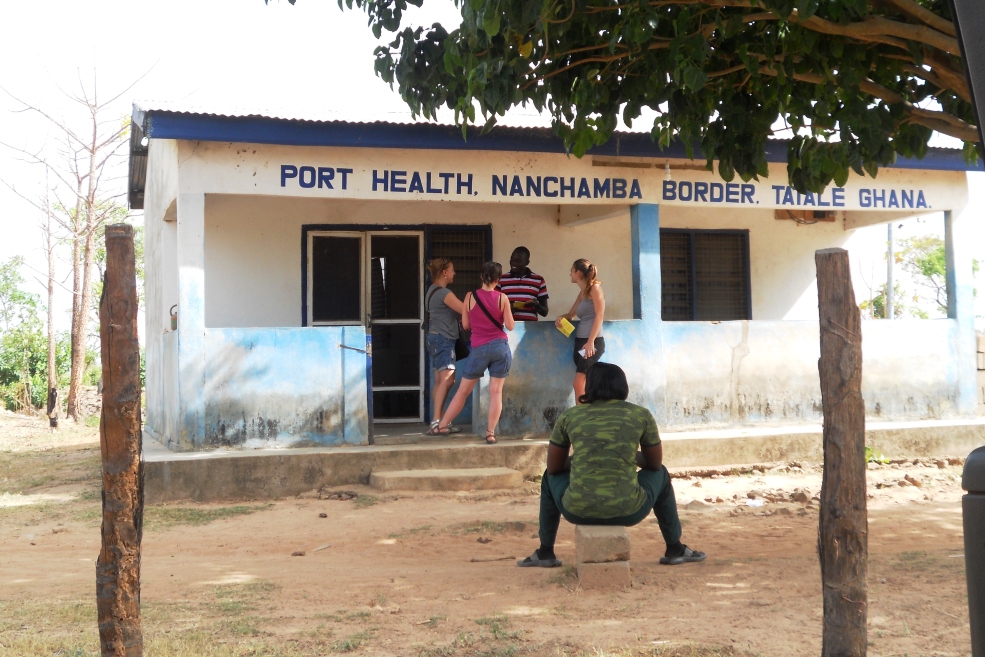

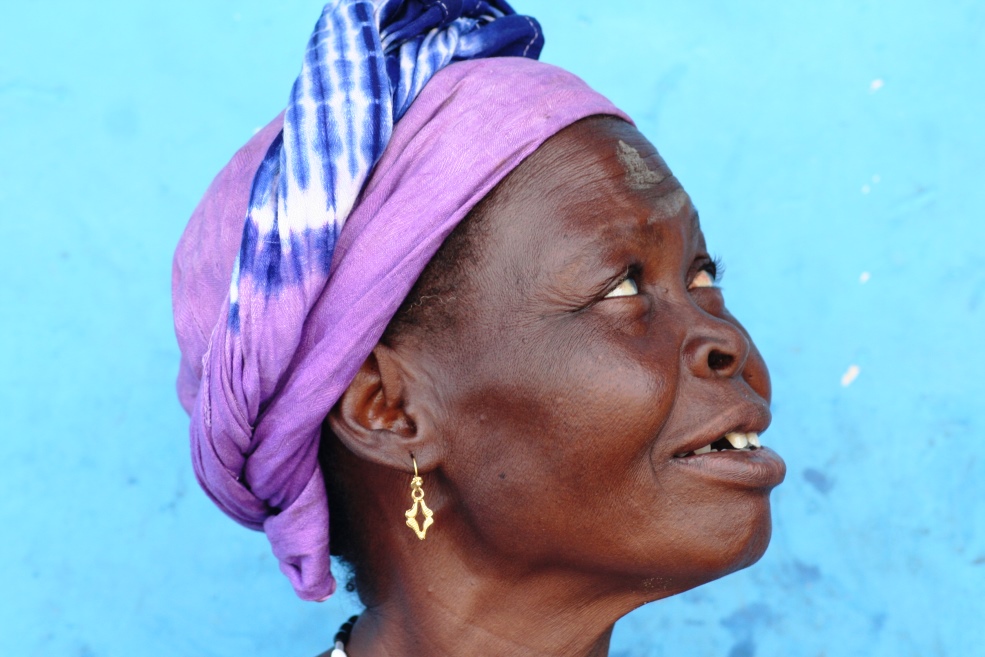
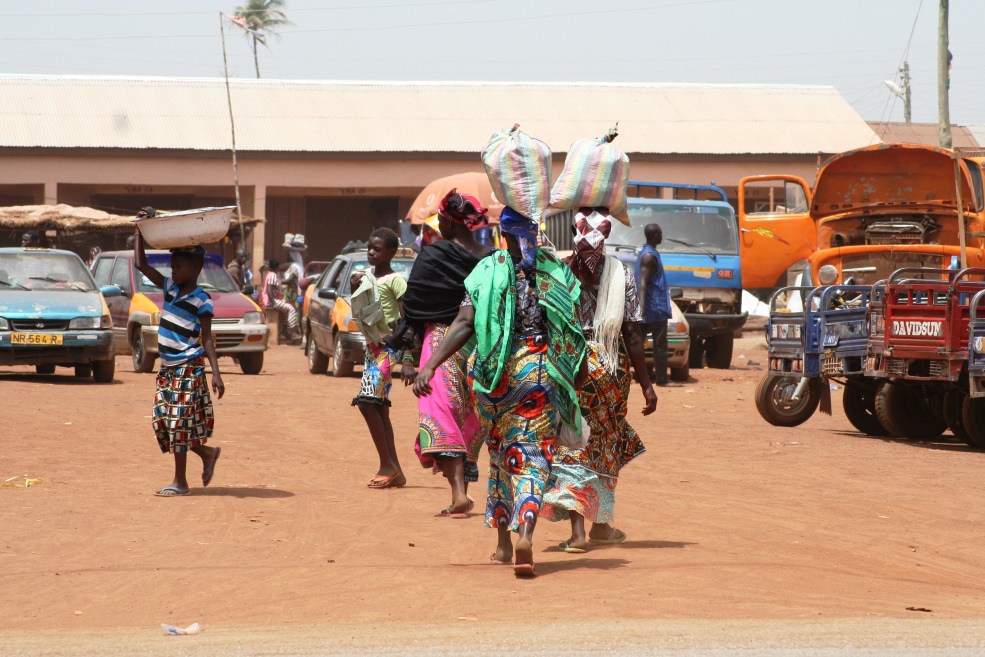
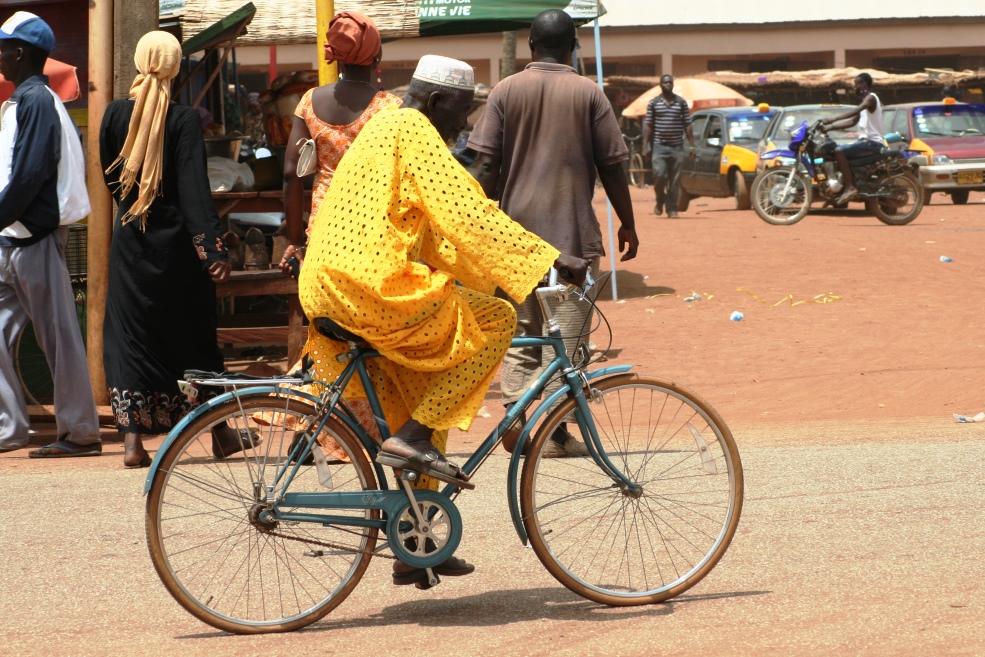
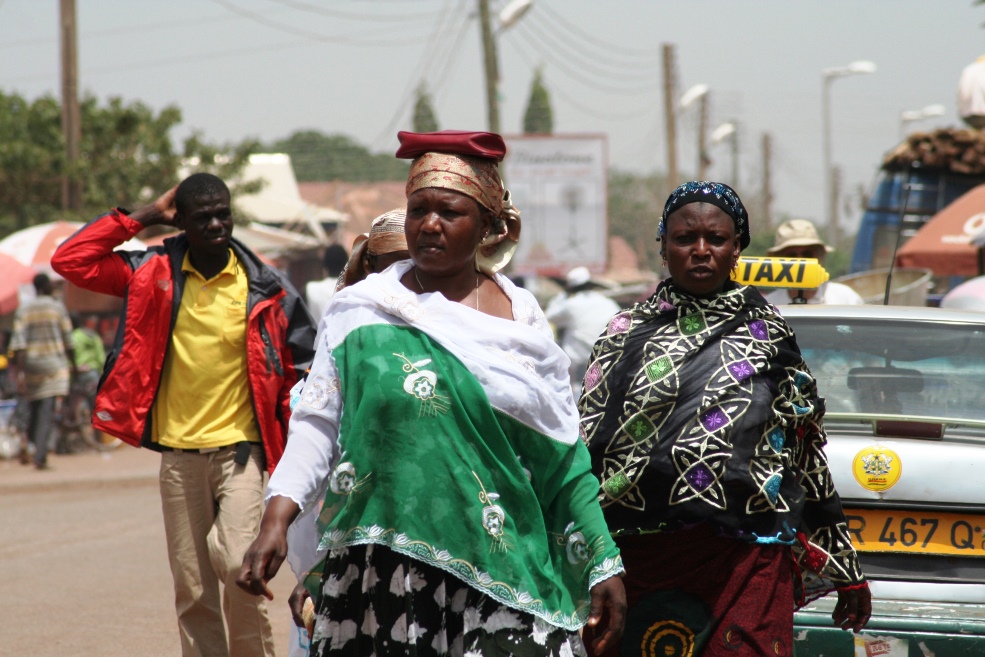

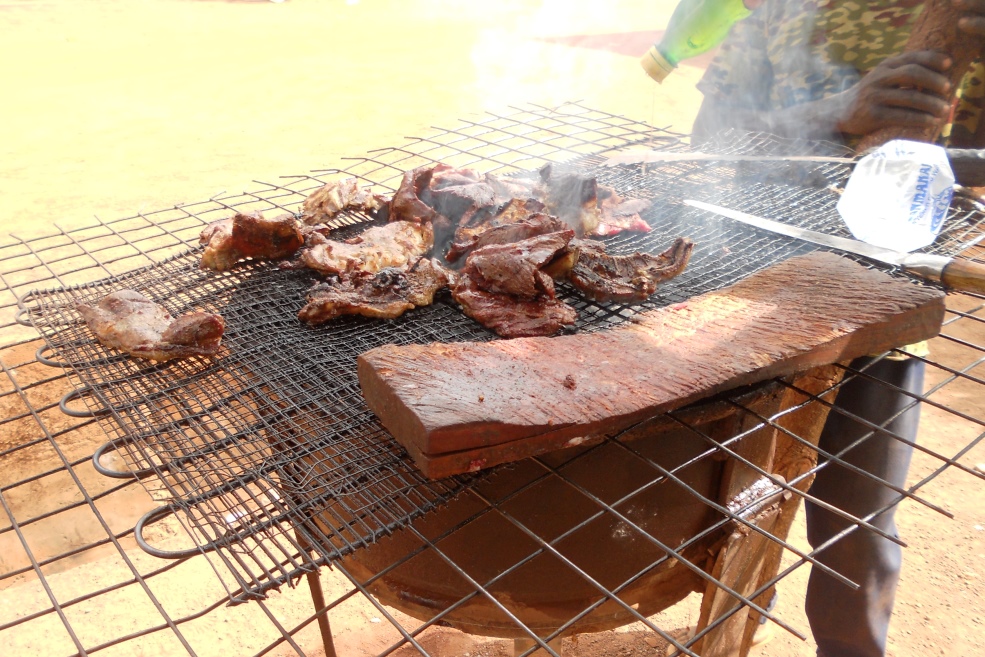
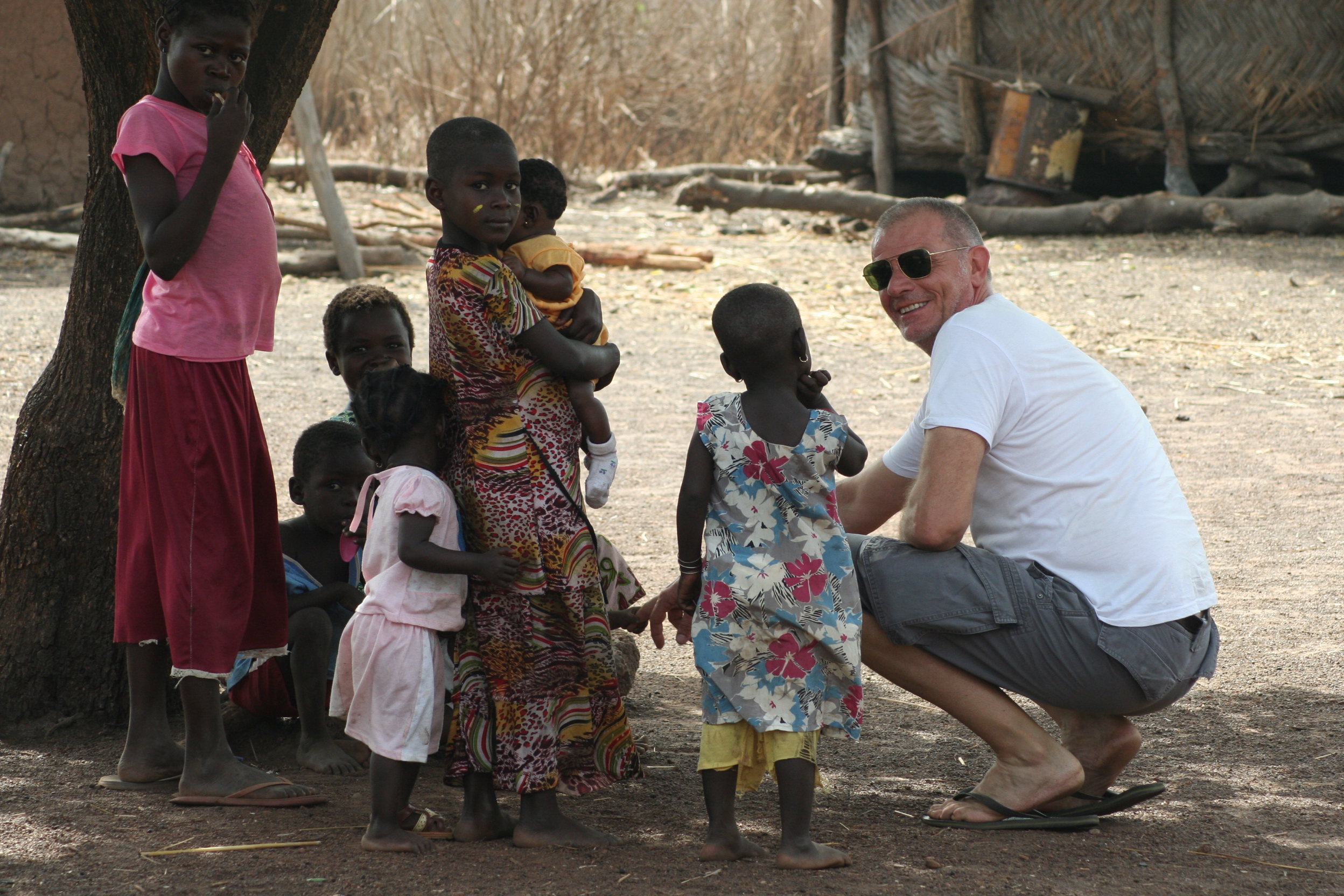
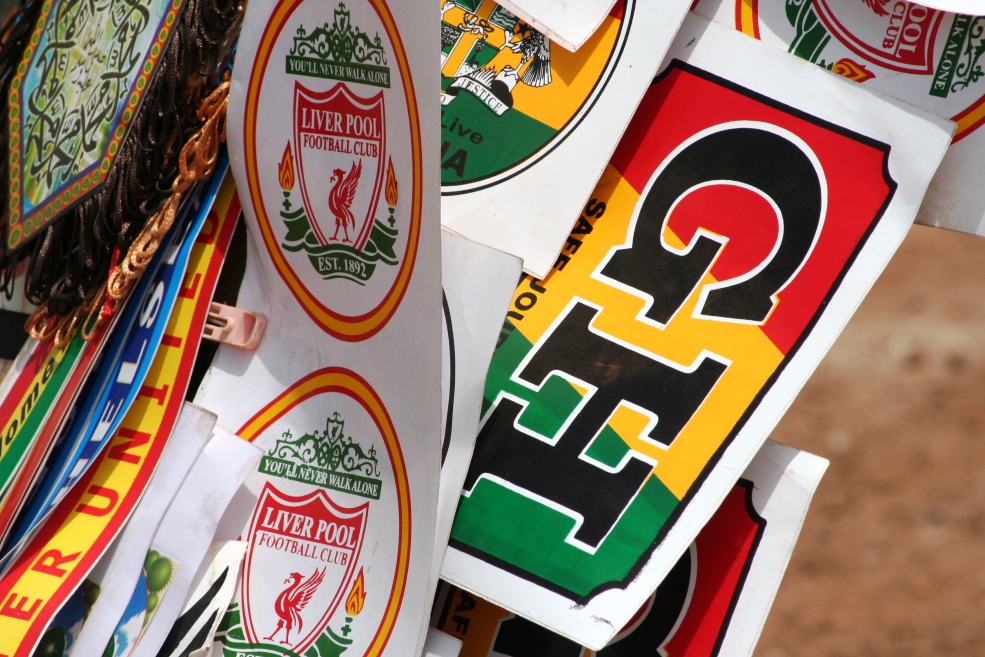
Error: No feed found.
Please go to the Instagram Feed settings page to create a feed.
8 Responses
Ciao ragazzi bel articolo mi è piaciuto tantissimo. Continuate così.
Grazie mille mitico Ago, è stata un’avventura stupenda anche per il fatto che l’abbiamo vissuta con amici di cuore come te. Presto seguirà anche la parte del Togo e Benin quindi continua a seguirci! Hai visto la tua foto nel reportage?
Bellissimo, ho letto tutto d’un fiato…
Mi è sembrato di essere di nuovo lì!
Mi ha emozionato!
Grazie mille cara Ila, è stata davvero un’esperienza unica che raramente abbiamo provato in altre parti del mondo anche grazie al cuore di chi ha partecipato come te! Come dico sempre: “speriamo di vivere di nuovo esperienze simili insieme”! A breve pubblicheremo anche il Togo!
Wooowwww che racconto e che foto ragazzi… Stupendo sto pensando di andare a febbraio chissà… Vediamo Cmq un racconto stupendo grandi ragazzi
Grazie mille cara… Febbraio è un ottimo mese per vivere di nuovo un viaggio insieme in Africa!!!
Mark,congratulations,your blog is so exhaustive,many good informations.Grazie di esistere.
Grazie mitico!!!! detto da un grande viaggiatore come te mi fa davvero piacere! Allora condividilo con altri viaggiatori!!!!